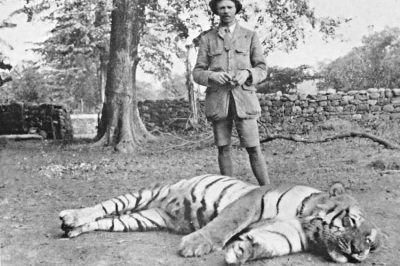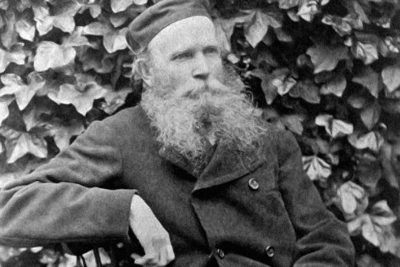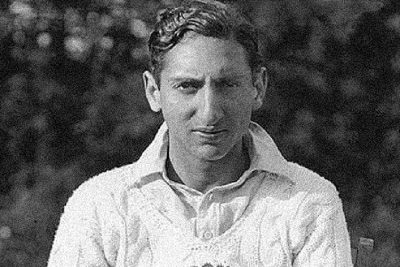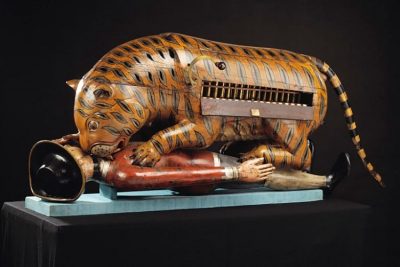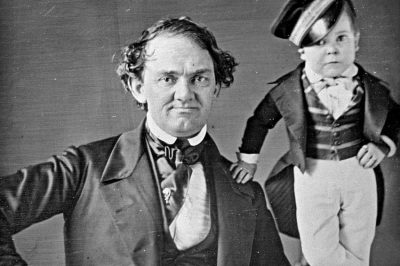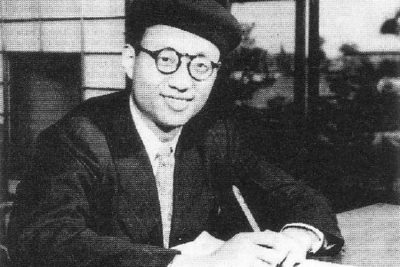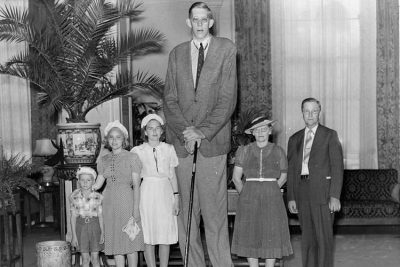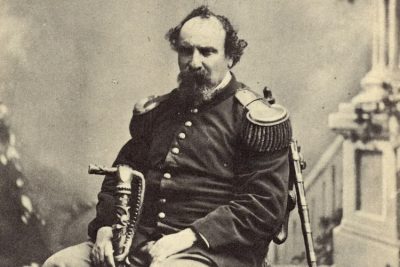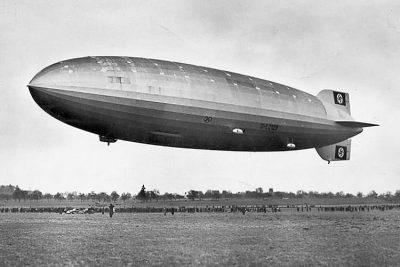The post Rick Rojatt—The Stuntman Who Became Famous as the Human Fly appeared first on .
]]> While many people crave for fame and fortune, there are some who, having tasted each, prefer to revert to anonymity. Rick Rojatt, The Human Fly, is someone in this category. He appeared seemingly out of nowhere to astound the world with his extraordinary, death-defying stunts and disappeared almost as suddenly and offering no explanation. Throughout his career, he had kept his identity a closely guarded secret, and it has remained so ever since.
While many people crave for fame and fortune, there are some who, having tasted each, prefer to revert to anonymity. Rick Rojatt, The Human Fly, is someone in this category. He appeared seemingly out of nowhere to astound the world with his extraordinary, death-defying stunts and disappeared almost as suddenly and offering no explanation. Throughout his career, he had kept his identity a closely guarded secret, and it has remained so ever since.
Rick Rojatt
In 1976, Joe and Dominique Ramacieri, who were Montreal-based sausage-makers and ran a family business called Roma Foods, decided to expand into show business. They formed the Human Fly Spectaculars, Ltd., and hired a stuntman named Rick Rojatt to perform attention-grabbing stunts. Rick Rojatt always appeared in public in a red felt full-body costume that masked his identity. The suit had white stripes and sequins, and he often wore it with a cape and a helmet. He also carried a sceptre sometimes.
As Rick Rojatt’s popularity grew, the public became interested in his personal life, and he had quite a backstory to impart.
According to what Rick Rojatt told the media, he was a Canadian stuntman from Montreal, Quebec, who went by the professional name ‘The Human Fly’. He claimed to have been active as a stuntman in Hollywood in the 1970s, although the California Union has no record of him in their roster of stunt performers. And, as he always wore a red and white mask to cover his face, nobody ever knew what he looked like.
He did, however, reveal some parts of his personal life in an interview with People magazine. According to him, five years before he emerged into the limelight, he had lost his wife and four-year-old daughter in a horrific car accident in North Carolina, and he had barely survived it himself. It took him four years and 38 operations that involved augmenting his skeleton with 60 percent steel to get back on his feet again.
He had since rebuilt his health by following a strict regimen of rising at 3 a.m. every day and going for a six-mile run. After that, he bathed in an ice cube-filled bath.
His steel-enhanced skeleton, or so he claimed, made him almost indestructible, and that was why he dared to perform his incredible stunts.
In another version of the tale, he claimed he was injured after an angry female gorilla flung him across the enclosure while he was working in the Montreal Zoo.
Rick Rojatt’s Aeroplane Wing Walk
In 1976, when he was 29 years old, Rick Rojatt performed the famous stunt that made him a household name across USA and Canada. He walked over the wings of a Douglas DC-8 airplane that was in mid-flight. His company, the Human Fly Spectaculars, Ltd., made a promotional film of the event called “The Human Fly Challenges the Mojave Skies.”
Wearing a red and white mask, a white cape, and a steel-reinforced jumpsuit, with the UCLA marching band playing in the background, the Human Fly made his appearance at the Mojave, California, airport. He informed the gathered media people that he had prepared for the stunt by practising in a wind tunnel. A crane lifted him on the waiting airplane, and his three assistants strapped his chest and legs onto a steel brace device they had fixed with cables to the plane. To help him breathe while in flight, his nose and mouth had oxygen tubes in them.
Once he was in position, he gave a thumbs-up, and the pilot Clay Lacy took off and flew the four-engine jet plane up to 500 feet at a speed of 280 mph over the Mojave desert. They were in the air for about 20 minutes. As Rick Rojatt walked across the plane’s wing, they got caught in a rainstorm, and, at that speed, the water drops hit him so hard that Rick passed out from the excruciating pain. He had to be hospitalized for two weeks to recover.
He repeated the stunt, however, the following year. The only issue in that instance was that his helmet visor came off during the flight, and he had to squint in the high winds.
Revelling in the publicity from these stunts, Rick Rojatt informed People magazine that he had had no reason to be afraid. He also told them that he was planning on performing more death-defying stunts in the near future. These included sky-diving over the English Channel, jumping into a water tank from the CN Tower in Toronto, and sky-diving over Mount Everest.
The purpose behind these stunts was simple, as his manager explained to the media people. It was to make money.
Rick Rojatt’s Motorbike Jump
One of Rick Rojatt’s to-do items was to beat Evel Knievel’s world record of jumping a motorbike over 13 school buses. In 1977, he announced that he would out-do that feat by driving over 27 vehicles. He intended to jump over 36 of them but was dissuaded from the idea by Ky Michaelson, who fitted out his motorbike for the jump.
The motorbike was a 1977 Harley Davidson XL-1000 Sportster, and Ky Michaelson fitted two hydrogen peroxide rockets, each with a 1500 pound thrust, on top of each other under the fuel tank. With these rocket engines, the motorbike could go over 300 mph.
The stunt took place as a half-time show during a disco concert in Montreal’s Olympic Stadium, featuring Gloria Gaynor and various other performers.
Right before the stunt was to happen, Ky Michaelson took a look at the jumping and landing ramps and noticed that the workmen hadn’t built them to the required specifications. He immediately pointed that out to Rick Rojatt and his team and asked them to call off the jump that night. He also reminded them that Rick Rojatt hadn’t even test-driven the motorbike, and to attempt the stunt in these conditions would be disastrous. They refused to listen, however.
According to Ky Michaelson, Rick Rojatt looked completely drunk or drugged. He asked him how to operate the motorbike and then got on it and took off, with white smoke emitting from the exhaust and the music blaring in the background. As the crowd watched, he soared off the launch point and flew over the buses. He managed to reach the 19th bus, and then the motorbike flipped over and crashed on top of him. After the crash, he and the bike went sliding at high speed over the roofs of the remaining buses and then hurtled down the landing ramp.
A silence enveloped the crowd. Everyone thought Rick Rojatt was dead. Nobody could come out of such a crash unscathed. As it turned out, though, if anyone could survive it, it was Rick Rojatt. He had not only broken Evel Knievel’s world record by jumping over 19 buses, but he had also managed to stay alive too. The stunt cost him a broken ankle and various other injuries, but he was otherwise alright. He even waved to the public as the medics carried him off on a stretcher to the ambulance, his mask still in place to safeguard his anonymity.
However, that was the last time anyone saw him in public as The Human Fly.
Thereafter, Rick Rojatt simply disappeared from the public eye, and no one ever heard from him again.
Rick Rojatt: The Inspiration Behind Marvel Comics’ The Human Fly
After Rick Rojatt became a public celebrity with his airplane walk, Marvel Comics was inspired to base a new character, The Human Fly, on him. They gave him the slogan ‘The wildest superhero ever because he’s real!’ The character had the same fantastic back history as the real Rick Rojatt, performed stunts to give money to children’s charities, fought off villains, and saved children in danger.
Written by Bill Mantlo, with inputs from Marvel’s other writers and editors, the first issue of the comic book came out in 1977. It was a short-lived series, lasting from September 1977 to March 1979, with only 19 issues. However, it was quite popular for a while, and the character received a lot of fan mail. Marvel included it in each comic book under the section titled ‘The Fly Papers’.
The real Rick Rojatt—in costume—helped with the publicity blitz by visiting sick children in hospitals and by being a featured guest at children’s charity events. Along with posing for photographs with his fans and signing autographs at each event, he fought off and defeated villains before they could steal the money, to the cheers of everyone present.
What happened to Rick Rojatt?
After Rick Rojatt’s disappearance, his fans made many attempts to track him down and discover what had happened to him. The Ramacieri brothers were not much help, beyond informing the public that they had hired several stuntmen to perform in costume. They hinted that perhaps Rick Rojatt had switched careers to become a musician. Beyond that, everyone came up against a blank wall. There was no mention of the stuntman in any newspapers, not even in the obituary sections. Rick Rojatt’s exact whereabouts remained unknown.
For more unusual stories & intriguing news follow STSTW Media on Instagram and Facebook. Also, join our live chat discussion on Twitter.
Do you have a story/photo for us?
We welcome your contribution at [email protected]. Please include your name, city, state, and country.
Fact Analysis:
STSTW Media strives to deliver accurate information through careful research. However, things can go wrong. If you find the above article inaccurate or biased, please let us know at [email protected].
RELATED
The post Rick Rojatt—The Stuntman Who Became Famous as the Human Fly appeared first on .
]]>The post Anton LaVey: The Man, The Myth and The Devil appeared first on .
]]>
Anton LaVey. (erico luxero / Flickr)
Anton Szandor LaVey was a man with multiple titles, “The Father of Satanism” and “The Black Pope” are two of the names he’s referred by. An occultist and a self-proclaimed sorcerer, Anton LaVey in 1966 founded a new religion-Satanism, opposing the beliefs and teachings of Abrahamic religions.
The Devil is in the details
Born as Howard Stanton LaVey (on 11th April 1930) to Michael Joseph LaVey and Gertrude Augusta (Coulton) LaVey. While his father hailed from Ohio, his grandparents were from Russia, who immigrated to the US in 1893 and then became naturalized citizens. Soon after he was born, his parents moved to California. Influenced by his mother’s Eastern European origins, Anton became fascinated with obscure naturalistic traditions. He was obsessed with paranormal literature and Gothic novels, including Dracula and Frankenstein. Despite the misconceptions (and a claim made by LaVey himself), he never joined a circus. That said, sessions during the Christian revival meetings were apparently what made him deeply cynical of religion as an institution.
LaVey loved music, trying a variety of musical instruments to eventually settle for the keyboard because of its flexibility and versatility. Anton’s mastery over the instrument allowed him to become an organist in bars and lounges.
The Birth of a New Church
Alongside his musical career, LaVey continued his research on the paranormal. He was very social and charismatic, throwing lavish parties that attracted anthropologists, horror and sci-fi writers, sexologists, and so on.
As his popularity soared, so did the scope for his lectures on the occult. He started amassing more and more disciples. In April 1966, after shaving his own head, Anton LaVey established the Order of Satan, with his painted black Victorian mansion as its headquarters.
Out with the Old Gods, here comes the New
Contrary to popular belief, the church itself was atheistic in nature, since the Order did not worship the literal Satan. Anton was a man who believed in egoism and individualism up to a point that he was an anti-egalitarian. His work was influenced by Nietzsche, Ayn Rand, H. P. Lovecraft and others. He rationalized the use of Satan imagery as a rebellion against Christianity. The occult was like a ‘do-it-yourself god kit’ that provided a much-needed alternative and indulgence. He strongly believed in the indulgence of oneself as long as it doesn’t hurt others.
LaVey was very heavily criticized by conservative society for being a ‘showman’ and a ‘fraud’. When asked for his comment on these criticisms, he simply replied: “Oh! If someone begs to be misused, I will gladly oblige.”
A Cult of Personality
The bulk of information on LaVey is actually missing. From unreliable historians to mystifying himself into a legend, very little is actually known from his early personal life. It seems that with the growing influence of his cult; he did not like to reveal certain aspects of his life. His own biography provides exaggerated or even false information. For example, LaVey claimed he had a brief affair with Marilyn Monroe, back in the day, when she was an unknown dancer at Mayan Theater. However, all the staff including the manager confirmed Monroe was not a dancer there at that point in time.
LaVey also claimed that he was a millionaire and owned obscure property like a 185-foot yacht. However, in reality, he earned around $50,000 a year and was declared bankrupt in the year 1989. His final years were subsidized by California Welfare Aid.
A Family Splinters
LaVey’s aura of obscurity and larger-than-life personality loomed over his disciples. A lot of people were quite unhappy with his rigorously strict management laws (such as membership never exceeding more than 2,000 people). This led to the fractionalization of his church. For instance, The Temple of Set was formed after LaVey abolished the system of regional groups or grottos. He had decided instead to sell priesthoods in the Church of Satan in exchange for cash.
Many also dissented from certain principles of LaVey’s and created their own satanic religions. The Satanic Temple is one of these, and considers itself to be a ‘natural evolution of the satanic thought’. They incorporated ideas such as egalitarianism, social justice and the separation of the Church and the State. The Satanic Temple also criticized the original LaVeyan Satanism for its lack of interventionism and political lobbying. LaVeyan Satanists responded by rejecting them as ‘real Satanists’.
The Legend and his Legacy
On 29th October 1997, Anton LaVey died due to complications stemming from pulmonary oedema. His funeral was held in Colma and he was later cremated. His daughter Karla LaVey declared herself his heir and took Anton’s place as the new High Priestess of the Church of Satan. She announced the same in a press conference while disclosing his death. The controversial and charismatic reputation of Anton LaVey lives on through his legacy- the Church of Satan, which continues to draw people into its fold.
For more unusual stories & intriguing news follow STSTW Media on Instagram and Facebook. Also, join our live chat discussion on Twitter.
Do you have a story/photo for us?
We welcome your contribution at [email protected]. Please include your name, city, state, and country.
Fact Analysis:
STSTW Media strives to deliver accurate information through careful research. However, things can go wrong. If you find the above article inaccurate or biased, please let us know at [email protected].
RELATED
The post Anton LaVey: The Man, The Myth and The Devil appeared first on .
]]>The post Betty Robinson: How a Plane Crash Survivor Became the Fastest Woman of Her Time appeared first on .
]]>From catching trains to training for the Olympics

Betty Robinson. (Library of Congress)
Betty Robinson (or as folks would name her ‘the Babe’) was born as Elizabeth M. Robinson on 23rd August 1911 in Robinson, Illinois. Leading a quite generic all-American lifestyle, the turning point in her life was four months before the Amsterdam Olympics when she was trying to catch her local train to the Harvey High School. The assistant track coach of her school, Carlie Prince, saw her sprinting at her top speed and catching up to the train in no time, an impossible feat in his eyes. The very next day, he tests and times her speed around the school corridor and sets up a meet. She was perplexed and confused as she was not even aware that women could race as an athlete at that time. Three weeks later, her ‘meet’ turned out to be a competition between the members of the Illinois Athletic Club.
And she blew everyone away. Untrained and unprepared, Betty finished the race to a close 2nd, almost beating Helen Filkey, the fastest runner of the Club. She was offered to join the Illinois Athletic Club, and she eagerly agreed.
The next few months revealed her to be a powerhouse of talent. She was put through a gruelling regimen to further polish her nascent skills, made to run and caught her train over three times a week. She soon ran for the Olympic trials (the very first for her club) and broke records, even ending up as the finalist in the New Jersey. She nearly beat Etla Cartwright, the top runner from California.
The accident of Betty Robinson
Betty broke local, national and global records in Chicago, including the Amateur Athletic Union, until a stroke of ill-fate hit her. On June 29th 1931, Robinson was travelling with her cousin who recently earned his new pilot license and owned a biplane and sustained a major plane crash. The plane took a major nosedive from a height of 600 meters. Her injuries were very severe, including a broken left arm, mangled left leg, and an eight-inch gash across her forehead, and she instantly slipped into coma. Rescuers thought that she was dead. It was only when the undertaker realized that she was actually alive, that she was then taken to an infirmary in Oak Forest. Betty was in the hospital for three months. A lot of press outlets falsely declared her dead, owing to her long absence and serious injuries. The Evening American wrote,
“Lying almost paralyzed on a cot, Betty Robinson today fought to win the hardest race she ever ran – a race in which the Grim Reaper was pacing her.”
It took another three months before she could get off the wheelchair and another month to get off the crutches. She was not able to walk for the next two years and missed the 1932 Summer Olympics. Recovery didn’t make things any better as her injured leg was a one-half inch shorter than the other and she could barely move her knee to crouch.
However, Betty wanted to win at least another gold medal before she finally retired. During her trials for the 1936 Summer Olympics, she only managed to get the fifth of the six-position relay team. “The doctor said if I hadn’t been in such good condition I wouldn’t have come out of it as well as I did”, quoted Betty.
A fated win
On August 9th, 1936, the finalists of the 4 × 100 metres relay in the 1936 Summer Olympics (Germany), sprinted off to reach their ultimate goal, while Hitler sat on a high pavilion assured that the Germans would prove their physical superiority. The race was nearly at the end and the German team was on the verge of beating the US. An unfortunate incident, where Marie Dollinger dropped her last baton which got her disqualified. Though she broke the record of her sprinting, her mistake cost her the race.
And thus Betty won her gold medal.
Happily ever after?
Betty Robinson continued to make new records in the 50, 60, 70, and 100 yards, and after she retired, was inducted into the United States Track and Field Hall of Fame, and the Helms Hall of Fame, and decided to not to advertise or model. She later became an international coach, timer, traveller, motivational speaker and an advocate for female athleticism. Betty was also a spokesperson for organizations such as the Women’s Athletic Association and the Girl’s Athletic Association. She married Richard S. Schwartz in 1939 (a furniture artist) and had two kids: Richard and Jane.
We may remember her many triumphs of the past, but it is likely that she herself did not. Betty was battling cancer and Alzheimer’s disease for a very long time and eventually succumbed to it on 18th May 1999. She was 87 years old. In 1998, during Olympic memorabilia, Betty Robinson and Alfred Oerter Jr. were supposed to cut the rope together. Robinson, however, snipped the ribbon first. “I’m still the fastest”, she said- a statement that perhaps sums up her brilliant journey.
Enjoyed this article? Also, check out “The One-legged Runner Who Challenged Cancer: Terry Fox“
For more unusual stories & intriguing news follow STSTW Media on Instagram and Facebook. Also, join our live chat discussion on Twitter.
We welcome your contribution at [email protected]. Please include your name, city, state, and country.
Fact Analysis:
STSTW Media strives to deliver accurate information through careful research. However, things can go wrong. If you find the above article inaccurate or biased, please let us know at [email protected].
RELATED
The post Betty Robinson: How a Plane Crash Survivor Became the Fastest Woman of Her Time appeared first on .
]]>The post Noor Inayat Khan: Britain’s First Muslim War Heroine appeared first on .
]]>
Noor Inayat Khan. (Imperial War Museums)
In her short lifetime of thirty years, Noor Inayat had many achievements. She was awarded the George Cross, posthumously, for her commendable service in the Special Operations Executive (SOE). The George Cross is said to be the ‘second highest award’ within the United Kingdom honours system.
Early life of Noor Inayat Khan
Noor Inayat Khan was the eldest child, and had three siblings – Vilayat (1916-2004), Hidayat (1917-2016), and Khair-un-Nisa (1919-2011), all of whom were born in London unlike Noor herself. Her parents were often thought to be an unlikely couple. Her father, Inayat Khan, belonged to a noble Indian Muslim family who descended from the lineage of Tipu Sultan, the ruler of Mysore in the 18th century. Inayat Khan lived in Europe as a Sufi teacher and musician. Her mother, Ora Baker was born in Albuquerque and had a half-brother, Pierre Bernard, who was an American yogi. She met Noor’s father in San Francisco via her brother when she attended one of the lectures during Inayat Khan’s visit to the United States. Their son Vilayat later became the leader of the Sufi Order International (founded by Hazrat Inayat Khan).
During the World War I, the family moved to Bloomsbury in London, where Noor Inayat’s siblings were born and she attended nursery in Notting Hill. In 1920 they relocated to France, and began to live in their house ‘Fazal Manzil’, which was located in Suresnes, Paris. However, tragedy struck the family in 1927 with the death of Inayat Khan while he was away on a pilgrimage to India. Noor was only 13 when her father passed away, and she had to shoulder the responsibility of the entire household – her three young siblings, and her mother who was paralysed with sorrow.

Fazal Manzil. (Celette / Wikimedia Commons)
An accomplished young woman
Noor was a highly accomplished young woman, and was described as quiet, shy, dreamy and sensitive as a young girl. From a tender age, she enjoyed writing poems and short stories, and had a flair for music. She pursued a course at the Sorbonne in Child Psychology, and also attended Ecole Normale de Musique de Paris, where she began composing for instruments like the harp and the piano. She began writing stories for children and poems for several magazines and Radio Paris. Noor published her first book in 1939 in London, called ‘Twenty Jataka Tales’ when she was only 25 years old. It was the traditional Buddhist Jataka Tales that inspired her to write this book.
However, in 1940 after the outbreak of the Second World War, the peaceful routine of Noor’s life was disrupted. She lost her family home when the German troops invaded France and the Khan family was forced to flee and escape to London.
Service at the Women’s Auxiliary Air Force (WAAF)
Even though Khan had been greatly influenced by her father’s philosophical teachings and had been brought up on Mahatma Gandhi’s principles of non-violence, she was determined to help defeat the raging Nazism. Her brother Vilayat’s support encouraged her to join the Allied Forces, and she volunteered for the Women’s Auxiliary Air Force (WAAF) in November 1940. Noor qualified as an Aircraftwoman 2nd class, and she was sent to be trained as a wireless operator. Subsequently in June 1941, she was trained at bomber training school. However, she was dissatisfied with the work she was doing and wanted to contribute more to the war efforts. This led her to apply for a transfer within the British forces in a field that would allow her to assist in a more dynamic manner.
Noor’s training at special operations executive (SOE)
In 1942, Noor had been recruited by the Special Operations Executive, which was an ‘underground espionage and sabotage task force’ that had been set up by Winston Churchill, who was the Prime Minister of Britain at the time. In February 1943, Khan was appointed at the Air Ministry, Directorate of Air Intelligence first, and then reassigned to First Aid Nursing Yeomanry (FANY). She was eventually transferred to Wanborough Manor in Surrey near Guildford. Later, she was sent to be trained to be a wireless operator in enemy territory, to Aylesbury, which is the county town of Buckinghamshire.
Previously, female agents had been sent only as couriers, and Khan was the first to be sent as a wireless operator. She had an advantage over the others who had just begun their training as she had received wireless telegraphy training before. Later, she was sent to Beaulieu, for further training with other agents.
Even though she was a quick learner and very precise, her physique and meek manners were considered to be unsuitable for the extremely difficult SOE training. Her trainers mentioned that she was clumsy and very scared of weapons. Her seniors believed that due to her spiritual beliefs she was unable to make quick decisions that were necessary in her field of work. Her trainers also noticed that she often left codebooks lying around and her ‘fist’ (style of tapping keys) was quite heavy as a result of her bloated fingers. During her mock Gestapo interrogation training sessions, Khan would get terrified and often give away personal information. She would get extremely scared and would lose her voice. She would continue to shake and would turn white with fear even after training was over.
Khan’s mission in Paris
Khan worked hard to try and ameliorate her physical fitness, Morse code skills, and she successfully conquered her fear of weapons. Very soon she was selected to go to Paris on her first mission as a covert wireless radio operator. The mission was believed to be highly dangerous as she was supposed to send and receive messages regarding the operations of the enemy while keeping her cover intact from the Gestapo.
The risk of being captured was very high but that did not deter Khan. She was flown into France in 1943 where she posed as a children’s nurse. Her codename was ‘Madeleine’. However, the mission had been sabotaged from the very beginning, and within a week of her arrival, the Gestapo had managed to capture nearly all the SOE operators who were in Paris. Noor was brave and refused to be extracted and continued her mission, and performed the work of six radio operators on her own.
Capture and imprisonment
While it remains uncertain what actually led to the capture, the conjecture is that Khan was betrayed by a double agent named Henri Dericourt, or perhaps Renee Garry, who was the sister of an SOE-F network leader and had been working for the Sicherheitsdienst. They captured her in October 1943, but she put up a lot of resistance. Mere hours after her capture, she attempted to escape from her cell in Paris but she was unsuccessful. During the interrogation sessions, Khan did not reveal any information to the Gestapo. However, they recovered her notebooks in which she had a meticulous record of all the messages that she had sent as an SOE operative. They then used this to send fake messages that led to the deaths of many other SOE agents.
A few weeks later, Noor attempted to escape again and refused to sign a declaration that stated that she would make no further attempts to run away again. She was taken to Germany and placed under solitary confinement, where she was brutally beaten and hardly fed. They kept her shackled and continued to torture her, but Khan refused to give away any information.
Death of Noor Inayat Khan
Khan was transferred to the infamous Dachau concentration camp, along with three other agents, on 13th September 1944. While the other prisoners were immediately killed upon arrival, Noor Inayat Khan was beaten and tortured before finally being shot in the head.
Remembering Noor Inayat Khan
In 1949, she was posthumously awarded both the prestigious George Cross by the British government and the Croix de Guerre by the French government. Her name can also be found on an SOE memorial plaque at Dachau. In February 2019, Noor also became the first woman to be accorded the rare honour of her wartime home in London being given a ‘Blue Plaque’. An unsung hero no more, her bravery and efforts during the war will always be remembered by people all around the world.
Enjoyed this article? Also, check out “A Cross-Dressing Explorer, Isabelle Eberhardt Crossed Geographic and Social Boundaries to Follow Her Heart“.
For more unusual stories & intriguing news follow STSTW Media on Instagram and Facebook. Also, join our live chat discussion on Twitter.
Do you have a story/photo for us?
We welcome your contribution at [email protected]. Please include your name, city, state, and country.
Fact Analysis:
STSTW Media strives to deliver accurate information through careful research. However, things can go wrong. If you find the above article inaccurate or biased, please let us know at [email protected].
RELATED
The post Noor Inayat Khan: Britain’s First Muslim War Heroine appeared first on .
]]>The post Li Ching-Yuen: An Extraordinary Lifespan of 256 Years, or A Hoax? appeared first on .
]]>An extraordinary life
Li Ching-Yuen was extremely skilful and had mastered Qigong, a Chinese art of breath-control and exercise similar to Tai Chi. He spent most of his life in the mountains and was born in Wanxian Sichuan, where he also breathed his last.
It is believed that Li had picked up advanced reading at a very young age, and was extremely well-educated. By the age of ten, he had travelled to several parts of Asia, including Vietnam, Gansu, Tibet, Shanxi, Manchuria, and Thailand, to gather herbs. He went on to be an acclaimed herbalist, and spent a century gathering and selling herbs. He traded in several essential herbs in Oriental medicine, such as wild ginseng, goji berry, lingzhi, gotu kola, he shou wu, and other Chinese herbs. His own diet consisted primarily of such herbs and rice wine.
Read more: ‘Ape Woman’ Julia Pastrana: The Sad and Short Life of the Ugliest Woman in the World
In 1749 when Li was around 71 years of age, he supposedly relocated to Kai Xian and joined the army under the provincial Commander- in- Chief Yeuh Jong Chyi. He served as a teacher of martial arts and as a tactical advisor in the army.
In 1926, the Chinese Warlord Wu Peifu invited Li to his residence in Beijing, to know his secret of long life. According to General Yang Sen, Li’s visit to Beijing coincides with the time Li was teaching Beijing University’s Meditation Society. Here, he was invited by the famous author and meditation master, Yin Shi Zi.
In 1927, General Yang Sen of the National Revolutionary Army, invited Li to his residence situated in Wan Xian, Sichuan, where one of Li’s earliest known photographs was taken.

Photograph of Li Ching-Yuen taken in 1927. (Wikimedia Commons)
Li is believed to have produced approximately 180 descendants and had 24 wives in his lifetime. When Li died of natural causes on 6th May 1933, in Kai Xian, Sichuan, China, his twenty-fourth wife was only 60 years old.
General Yang Sen’s account of Li Ching-Yuen
After Li Ching-Yuen’s death, General Yang Sen wrote a report about him titled ‘A Factual Account of the 250 Year-Old Good-Luck Man’ (一个250岁长寿老人的真实记载). In his report, the General outlines the probable timeline of Li’s lifespan. In his report, he describes Li as “He has good eyesight and a brisk stride; Li stands seven feet tall, has very long fingernails, and a ruddy complexion.”
According to the General, Li served as a tactical and a topography advisor in the army of General Yu Zhongqi at the age of 51 years. And he retired from his military career at 71 and went to back to his profession as a herbalist, gathering herbs in the Snow Mountain in Sichuan province.
Read more: Pasqual Pinon: The Aberration of Multiple Heads
The secret of a long life
Wu Chung-Chieh, who was a professor at the Chengdu University, had found documents which affirmed that Li had been born in 1677. Owing to his exemplary service in the army, when Li turned 100 years old, the Imperial Government sent him a document congratulating him on his birthday. This was done for Li’s 150th and 200th birthdays as well. According to an article in The New York Times in 1930, Wu found records of the Imperial Chinese Government wishing Li on the latter two of these events.
One of Li’s disciples, Da Liu, a Taijiquan Master recalled Li Ching-Yuen had encountered a 500-year-old hermit in the mountains when he was himself 130 years of age. The hermit taught Li several things, including Baguazhang and Qigong, along with proper breathing instructions, as well as recommendations for an ideal longevity-enhancing diet to be followed. According to Da Liu, Li’s advanced lifespan was because “he performed the exercises every day – regularly, correctly, and with sincerity – for 120 years”. Another one of Li’s pupils said that according to Li, the secret to a long life was to “keep a quiet heart, sit like a tortoise, walk sprightly like a pigeon and sleep like a dog.” An article in The Evening Independent mentioned that Li had apparently found a magical herb when he was in the Yunan Mountains that prevented him from going old.
Li Ching-Yuen’s longevity: is it a Hoax?
However, gerontologists have dismissed these claims owing to the fact that no official documents have been found that would verify Li’s claims to such a long life. Even though there is huge confusion regarding the year of his birth, it is highly unlikely that he could have lived for so long.
The longest verified age of a person has been recorded as that of Jeanne Calment, a supercentenarian, born in February 1875, in Arles, France. Calment had lived for 122 years and 164 days when she finally passed away on 4th August 1997, at Arles. According to records, Jeanne Calment outlived both her daughter, Yvonne, as well as her grandson.
Another recorded supercentenarian is Jiroemon Kimura, a Japanese man who was born in April 1897. He died in June 2013 and was 116 years and 54 days old. Kane Tanaka, yet another Japanese man, is a supercentenarian who is still alive at the age of 117 and was born in 1903.
Although it is possible that Li Ching-Yuen lived a long life—perhaps longer than the longest recorded person. However, it is unlikely that he made it anywhere close to 256.
For more unusual stories & intriguing news follow STSTW Media on Instagram and Facebook. Also, join our live chat discussion on Twitter.
Do you have a story/photo for us?
We welcome your contribution at [email protected]. Please include your name, city, state, and country.
Fact Analysis:
STSTW Media strives to deliver accurate information through careful research. However, things can go wrong. If you find the above article inaccurate or biased, please let us know at [email protected].
RELATED
The post Li Ching-Yuen: An Extraordinary Lifespan of 256 Years, or A Hoax? appeared first on .
]]>The post The Lone Empress— The Untold Story of Jayalalithaa, Iron Lady of Indian Politics by Vaasanthi appeared first on .
]]>
J. Jayalalithaa. (© Penguin Random House India)
India as a country is known for its reverence and cult following of public figures. Jayalalithaa Jayaraman popularly known as Jayalalithaa is one such flamboyant figure. An actor turned politician, she had an appeal and charm that captivated the hearts and minds of millions in the southern state of Tamil Nadu. Having served as a chief minister of the state six times in a period of fourteen years, Jayalalithaa was fondly referred to as Amma. She enjoyed a monopoly of power in state politics like no one else did and her life story is as fascinating as her personality. In the book The Lone Empress: A Portrait of Jayalalithaa, writer and journalist Vaasanthi looks into her life and tries to document the leader’s struggles on her journey up the ladder of success and fame.
“The story of Jayalalithaa, a former actress—Tamil cinema’s popular glamorous heroine of the early 1970s–turned tough politician—winning the hearts of millions of people, is one of the most extraordinary stories of Indian politics.”
The book begins with the leader’s tumultuous childhood; born in an affluent family in 1948, Jayalalithaa would not see the affluence for too long. Financial constraints over time and the early demise of her father landed the two-year-old Ammu, as she was called, with her mother and brother, at her maternal grandparents’ doorstep in Bangalore. The time she spent with her grandparents had a long lasting impact on Jayalalithaa’s life, writes the author. They continued to live in Bangalore until search for a better life led Veda, the leader’s mother, to Madras (now Chennai).
Her mother, Veda, born in a Brahmin family, was married at the young age of eleven, writes Vaasanthi. Being left alone to fend for herself and her kids, Veda accepted a lucrative offer in the film industry of Madras and became the star Sandhya. This, perhaps, paved a path Jayalalithaa would later embark on.
These chapters give us a personal glimpse into the charismatic leader’s life. From her life as a toddler to her academic brilliance as a school girl, and as daughter of a famed actor, we read through the revered politician’s life stages. Her mother’s fame left a void in her, as all the glory and success came at the cost of family time.
“Waiting for mother became a habit. Along with it grew disappointment and resentment. She hated the sight of film producers and actors who came to the house at odd hours.”
The author has taken the leader’s memoirs as a source to draw an intimate portrait. These memoirs give a peek into Jayalalithaa’s life, from waiting around for her mother to naively helping her senior “friend” from school. In her memoirs, Jayalalithaa writes regarding the latter incident, I realized what the word “betrayal” really meant. This not only gives a personal touch to the book, but also helps us understand the girl she was before becoming a greatly acclaimed actor and highly revered politician.
Having grown up under a film star, Jayalalithaa surprisingly had no inclination towards the film industry. The politician’s friend Srimathi, commenting on her academic choices and ambitions, says she had her eye on medicine or IAS. But, unfortunately, her desire for higher education was never understood. This, remarks Srimathi, was a waste of Jayalalithaa’s talent and intelligence.
Her destiny had different plans for her, and before she could join college, she was drawn into the vortex of film life. Although, she had received a scholarship for her brilliant performance in matriculation exams, she could not manage and balance studies and acting.
“At that point of time, she was extremely busy. She was acting in her first picture with MGR—the man who would irrevocably alter the course of her life, for better or for worse.”
MGR—the megastar and much-loved leader of his days, who would later become a chief minister of the state—mentored Jayalalithaa’s entry into politics. It was during his tenure as a chief minister that Jayalalithaa debuted as a politician in an AIADMK’s party conference in 1982. People gathered expecting to see a star, but were blown away by her fiery and eloquent articulation. MGR leveraged her entry into politics to win over the women voter base.

Jayalalithaa speaking during a conference, circa 1980. (Wikimedia Commons)
“Though women had always been swayed by him, with Jayalalithaa, even greater numbers were drawn to the conference. ‘It was the first time any political party in Tamil Nadu had succeeded in gaining the support of women in such a fashion,’ points out Panrutti Ramachandran, an MGR acolyte.”
In In June 1982, Jayalalithaa officially became a party member of AIADMK. Her move was anticipated with both keenness and hesitation; some thought she’d be a misfit and some knew Jayalalithaa was born to a be leader with her supreme intellect. Always drawn to serving and helping people, Jayalalithaa thought this could be her way to attain her long lost dream, as the time and chance to pursue education and a noble profession was long gone.
“It was her idea of ‘being of service to the people’ that made her think of joining politics, she said.”
The decision to join politics was a goodwilled and highly contemplated one. She knew what her decision would entail, says the author. Vaasanthi, writes about the actor’s pursuit of politics and the changes she had to undergo to de-glamourize her image. Her magnetic presence and appeal gathered large crowds, making the party favourable against the rival DMK.
“When MGR made her the party’s propaganda secretary, Jayalalithaa’s stature and importance grew manifold. She very consciously set about to ‘de-glamourize’ her appearance, perhaps in an attempt to wipe out the stigma attached to her as an actress.”
She worked diligently and did not limit herself to the campaigns, writes the author. She was as fierce behind the scenes as she was on the stage canvassing for her party. Her dedication to undo the lapses and wrongs in the administration of the party was commendable. Senior members of the party felt insecure with her pace and growing stature. And as hate campaigns brewed to malign her working, her fluency in English landed her at the Rajya Sabha as a Member of Parliament. This was just the beginning of her long political career.
The author and journalist Vaasanthi, then discusses about Jayalalithaa’s ordeals as a party member of AIADMK. Her popularity and functioning as an MP ruffled a few feathers in the party and it was soon divided into anti and pro Jayalalithaa houses. This was one of the many hurdles she had to cross to become the leader we know of today.
“Jayalalithaa’s story proves how difficult it is for a woman, facing odds and bereft of political pedigree, to survive in Indian politics. It is also a story, therefore, of how a woman tries to transform herself to survive in a male-dominated society.”
The book The Lone Empress seeks to tell a story of a charismatic leader, a leader adored and revered like no one else before. Vaasanthi, with her gripping style and narrative, hooks the reader till the last page. The much anticipated and waited portrait of Jayalalithaa fully satisfies the reader’s desire to know more about her. Drawing on Jayalalithaa’s memoirs, and interviews with her friends and colleagues, the book makes for an interesting and delicate read.
 The Lone Empress- A Portrait of Jayalalithaa | By Vaasanthi
The Lone Empress- A Portrait of Jayalalithaa | By Vaasanthi
“My book was a journalist’s attempt to understand the enigmatic persona of the most colourful, dynamic and determined woman politician that Tamil Nadu, nay, India has ever seen. –Vaasanthi”
RELATED
The post The Lone Empress— The Untold Story of Jayalalithaa, Iron Lady of Indian Politics by Vaasanthi appeared first on .
]]>The post The One-legged Runner Who Challenged Cancer: Terry Fox appeared first on .
]]>
Terry Fox along North Park St during 1981 Marathon of Hope. (Ross Dunn / Flickr)
Terry Fox was lucky to be born into a loving, caring family. Fortunate enough to have a teacher who inspired him no-end. But a road accident would bring him face to face with bone cancer, and the flip side of life. Could he do something to fight cancer for self, as well as for other patients? Yes, thought the Canadian athlete, Terry Fox. He would run a marathon to collect money for cancer research. And he ran a great distance, taking an artificial leg in his stride. Lost his life, but won against cancer, in a big way.
A versatile outdoor player
Born on July 28, 1958, Terry Stanley Fox was the second sibling among 3 brothers and 2 sisters. The qualities of head and heart he imbibed from his mother Betty, and father Rolly, set him apart from other children of his age group. School’s basketball coach, Bob McGill saw an immense drive in him and felt Terry would do better as a cross country runner than as a basketball player. Terry agreed in letter and spirit. The switch to running was hard in the beginning. But, true to his nature, Terry persisted and impressed his coach. Nevertheless, his love for basketball sustained even as his coach felt he wasn’t good at this game. Coach suggested yet another switch—wrestling. But basketball remained close to Terry’s heart, and his coach finally allowed him into the game. And as a student of class 8th, he became a formidable basketball player.
Excelled in Basketball
Terry was so possessed with the game that he would attend school even when ill. By the time he was in 10th class, Terry had become a key player of his basketball team. His dedicated attempts, irrespective of victory or defeat, were widely appreciated. In the final year of high school, Terry received the Athlete of the year award. Apart from basketball, Terry made his mark in soccer and rugby as well. In academics too, he showed significant improvement. On joining the University, he opted Kinesiology (the study of human movement) as his major subject and aspired to become a coach, a physical education teacher, like Bob. Praising him, Bob McGill said Terry always obeyed his coach. So much so that if the coach asked him to hit head on the wall, Terry would do it without a second thought.
A road accident changed his life
Terry was 18 years and pursuing University education when he met with a road accident in 1976. He escaped, virtually unharmed but with knee-pain that persisted for a long time. Four months later, in 1977, he went for a medical inspection. The report said it was Osteosarcoma, a bone cancer. From the knee, the cancer was spreading to the rest of his body. To check the spread, the leg was amputated at the thigh region. Before the surgical operation took place, his coach was on his bedside. He showed him an article on Dick Traum, an amputee who ran the New York City Marathon. And Terry got his new assignment.
Planned out Marathon of Hope
The surgery and the 16-month long chemotherapy that followed steeled his resolve to run like Dick Traum. Even after the surgery, he continued playing outdoor games – seated on his wheelchair. The plight of fellow cancer patients shook him to the roots. He would run, long and hard, and raise money for the welfare of cancer patients. The run would be called ‘Marathon of Hope’.
Followed his heart to the last breath
Feats that overshoot the limits of physical endurance have mind power behind them. The mind leads, and the body follows. Thigh cells that were supposed to stop growing at a particular biological age, didn’t. They continued to grow. Following surgery, Terry was supposed to lie low and take precautions, but he didn’t. His passion for games, and outdoors, remained undiminished. Cancer and Terry were so much similar, hence, bound to clash.
Resolved to raise money for cancer research
In 1979, Terry wrote to the Canadian Cancer Society asking for funds. He got funds as well as sponsorship for his fundraising run, the Marathon of Hope. On 12th April 1980, he began his marathon from St. John’s, Newfoundland, the easternmost point of Canada. He had reached there in the company of his friend Doug Alward. Start of the run was sober. No fanfare or celebrations that a Herculean effort of this magnitude verily deserved. A determined Terry bathed his leg in the Atlantic Ocean and began the epic run from the east coast of Canada.
Ran marathon for 143 days
Imagine a person running with just one leg, the other leg is artificial. It can’t be a smooth run. It would be a mix of limp and leap. And that’s what defined Terry’s run on the roads of Maritime Provinces. The staccato run of a human frame, braving elements of nature, was a moving experience for the onlookers. Blood oozed on the stub of his thigh and the consequent pain was writ large on runner’s face.

Terry Fox during his 1980 “Marathon of Hope”. (Jeremy Gilbert / Wikimedia Commons)
It was a poignant sight, and people in hordes gathered on roads to cheer and applaud him. Here was a Samaritan, a cancer survivor, running for the welfare of cancer patients. Terry ran 37.5 km (approximately 23.3 miles) every day, for a total of 143 days, end to end.
Ran to the tipping point, and fell to cancer
After covering a distance of 5,372 km (3,338 miles), Terry couldn’t take it any longer. Cancer had raised its head, again. On September 1, 1980, he was forced to stop running. Cancerous cells had invaded his lungs. He was treated, unsuccessfully, at British Columbia. On June 28, 1981, at the age of 22, he succumbed to cancer. But not before bagging coveted awards and honours: The companion of the Order of Canada, Lou Marsh award for outstanding athletic accomplishment and Canadian of the Year. His dream of raising money for cancer research was also realized.
Terry’s spirit survives his death
As they say: End is the beginning. He raised more than 11 million dollars through his Marathon of Hope. The trail he blazed, is here to stay. Terry fox run is held every year in September, in the memory of the prodigal runner. Similar runs are organized in more than 50 countries. The Terry Fox Foundation has raised over 400 million dollars for cancer research. An internet survey in 1999 named Terry Fox as Canada’s greatest hero. In 2004, Terry was declared second greatest (first being Tommy Douglas) Canadian of all time.
He was courage personified
In death, as in life, Terry Fox symbolises courage in adversity. Many buildings and roads in Canada are named after him. At Port Coquitlam, his home town, a city hall is dedicated to his memory. Theatre, Secondary school, Park, and a library in the town bear the name ‘Terry fox’. Port Coquitlam, the town where Terry got his prosthetic leg and learned to use it, is running a nomination campaign to put a picture of Terry on Canadian currency.
The whole of Canada is Terry Fox’s memorial

Terry Fox memorial in Ottawa, Ontario, Canada. (Alex Guibord / Flickr)
A statue of Terry adorns the space near the Prime Minister’s office. A commemorative one-dollar coin of Canada and a mountain have been named in Terry’s honour. Many believe, Terry could be seen on the Canadian currency soon. As per the norm, only the political luminaries find a place on a currency note. Terry may break this rule. As he broke many, so profusely, during his lifetime.
Enjoyed this article? Also, check out “Bobbie the Wonder Dog: Uplifting Story of a Separated Dog that Travelled 2500 Miles to Return Home“.
Fact Analysis:
STSTW Media strives to deliver accurate information through careful research. However, things can go wrong. If you find the above article inaccurate or biased, please let us know at [email protected].
RELATED
The post The One-legged Runner Who Challenged Cancer: Terry Fox appeared first on .
]]>The post Mary Ann Bevan- Story of the World’s “Ugliest Woman” and Her Life with Acromegaly appeared first on .
]]>
Mary Ann Bevan. (Wikimedia Commons)
Women across time and geographical boundaries have been stereotyped in their pursuit of physical ideals of beauty. In fact, the adjective ‘feminine’ itself has come to be synonymous with grace and beauty. For a woman to not be ‘feminine’, convention implies, she is not attractive. Mary Ann Bevan was a lady who famously bore the brunt of losing her ‘femininity’ and beauty, but turned the tide and profited from it.
Born in 1874 to a large family in London, Mary Ann was a conventionally attractive and charming young woman and led an ordinary city life. Her empathetic and compassionate nature led her to work as a nurse, which was a rather noble profession. Like any other woman, Mary Ann too dreamed of getting married to a handsome young man, building a family and eventually embracing motherhood. Little did she know, her dreams would come true but at the cost of her beauty. Over the years, Mary Ann Bevan came to be recognized as the world’s ‘Ugliest Woman’.
An unfortunate life
At the age of 29, in 1903, Mary Ann Webster married a handsome young man named Thomas Bevan. Upon her marriage, she came to be known as Mary Ann Bevan and had 4 children with Thomas. She paid a heavy price for Motherhood as she was since struck with one illness after another. Migraines, muscle pains, deteriorating eyesight, and various other problems began to torment her as Mary Ann’s health began to deteriorate. Bad luck followed her persistently through the years, and 11 years after her marriage, her husband passed away and left her as a widow with 4 young children to fend for. Worse still, her husband left her with almost no money to cater to her and her children’s basic needs. However, Mary Ann Bevan rose to the occasion and strove to do anything possible to keep her children well-fed and support them through life.
A strange metamorphosis
As her health deteriorated, her appearance began to change over time. Her basic facial structure metamorphosed in an abnormal manner, making her look more and more masculine by the day. Not only her face but her entire body changed with larger limbs and a larger torso. This was the onset of a rare disease called Acromegaly, which stems from a neuroendocrine disorder. As a consequence of this disorder, there is an increase in growth hormones in the body which leads to the enlargement of soft tissue. It also results in the development of a benign tumour, known as a pituitary adenoma. Though this disorder is now treatable, back in the 20th century, it had no cure.

Photo of Mary Ann Bevan captioned as “the world’s ugliest woman”. (American Philosophical Society)
A stroke of luck
With the passing of her husband, Mary Ann had to look for a job that would pay her enough to sustain her four children and herself. She applied to a number of prospective employers, but was turned away time and again owing to her physical abnormalities. Labelled as a “freak”, she ran out of options for daily jobs and was struggling to make her ends meet.
Out of the blue, Mary Ann came across a contest for the title of the “World’s Ugliest Woman”. Contrary to her rosy dreams as a beautiful young woman, she set forth to participate in this humiliating competition and surprisingly won it. She received a fairly large sum of money as a prize which allowed her to support her family freely for a while. However, her win also led to her being publicized in newspapers and openly mocked and humiliated. As gruelling as it was, she refused to bow down to adversity and chose to look at the silver lining: the tag of a “freak” could be exploited to feed her family. Eventually, Coney Island’s Dreamland Show invited Mary Ann to the United States of America to display her ugly appearance for profit.
Life as a celebrated “freak”
Although people ridiculed her, being at a circus brought Mary Ann Bevan a stable job and significant prosperity. In Coney Island’s Dreamland Show, she found solidarity and a unique kinship in being surrounded by people with unique characteristics. The notable circus ‘displays’ of the time included a bearded woman, Siamese twins, Giant men, Dwarves, all of whom had been labelled as ‘freaks’ by society. She spent the majority of her life working for the circus. She had forsaken her personal dignity to fulfill the needs of her children. Mary Ann Bevan had become a sensation in the circus community, and had come to take pride and ownership in her title as the “World’s Ugliest Woman”. Though she toured extensively around the globe, she returned to Europe only once in her lifetime as part of an exhibition.
Mary Ann Bevan became a source of entertainment for people and her pictures started appearing on postcards and greeting cards as a joke at the expense of her physical appearance. This raised a lot of legitimate concern among people, including her doctor, Harvey Cushing, who appealed to the Time Magazine against the same. There was an influx of demands on humanitarian grounds to stop making public statements and joking about her appearance as she suffered from a dangerous medical condition. As a prognosis of Acromegaly, Mary Ann Bevan died at the age of 59, in 1933. Even as late as 2006, her picture made a re-appearance in birthday cards, published by a company known as Hallmark Cards. At the appeal of several empathetic people and doctors, the company retracted these cards apologizing for having hurt any sentiments. The company claimed they were unaware that her unattractive physical appearance was owing to a fatal disease.
The last days of Mary Ann Bevan
Despite all the ridicule and humiliation, Mary Ann Bevan led a content life since she was able to selflessly provide for her children. Her final request to her children before she passed away was to have her buried in England. As she succumbed to her disorder and passed away, Mary Ann’s children buried her in Brockley Cemetery in England. She still serves as an inspirational figure for those who deal with Acromegaly. Mary Ann Bevan was a true feminist icon who proved that beauty is skin deep, and paved the way for people to accept their appearance and be proud of themselves as they were.
Enjoyed this article? Also, check out “‘Ape Woman’ Julia Pastrana: The Sad and Short Life of the Ugliest Woman in the World“.
Fact Analysis:
STSTW Media strives to deliver accurate information through careful research. However, things can go wrong. If you find the above article inaccurate or biased, please let us know at [email protected].
RELATED
The post Mary Ann Bevan- Story of the World’s “Ugliest Woman” and Her Life with Acromegaly appeared first on .
]]>The post Dr. William Chester Minor: A Learned Lexicographer or a Meritorious Madman? appeared first on .
]]>
Dr. William Chester Minor. (Wikimedia Commons)
A vocabulary is a literate person’s best friend. And a dictionary keeps a person updated on new words, their meanings and usage, and helps users expand their vocabulary. When one talks of a dictionary, the first name that pops up in mind is the Oxford English Dictionary (OED), one of the most widely accepted wordbooks in the world. But did you ever think about people who came up with comprehensive synonyms for a single word or how they managed to compile all the information in a single book? Well then, here’s an interesting piece of the story about Dr William Chester Minor, an army surgeon, who was one of the top contributors to the Oxford English Dictionary.
The early life of William Chester Minor
William Chester Minor was born in Ceylon (present-day Sri Lanka) on June 22, 1834, to an American missionary couple. When he was three, Minor lost his mother and subsequently, his father remarried. W. C. Minor grew up in a large family with eight half-siblings, one of whom – Thomas T. Minor – went on to become the mayor of Seattle, Washington. When Minor turned fourteen, he started living in New Haven with his uncle in Connecticut, where he studied and supported himself financially. In his late twenties, he graduated with a degree in medicine from the Yale University in 1863, with a specialization in comparative anatomy.
His life in the armed forces
During this period, Civil War was at its peak and young Americans had to enrol themselves in the armed forces to fight for their country. Minor, too, joined the Union Army and served as a surgeon at the Battle of Wilderness, treating wounded soldiers on the war front. Shortly after joining, the horrors of war took a toll on him. Witnessing a large number of deaths and casualties on both sides, and the atrocities on the surviving enemy soldiers, Minor started to develop traumatic symptoms. Performing detailed autopsies on corpses added fuel to the fire and he began experiencing episodes of paranoid schizophrenia. This led him to an unexpected addiction. Minor took a posting in New York and began visiting red-light districts on a frequent basis during the late 1860s.
In 1868, following Minor’s ‘new-found interest’ and his recurrent bouts of psychosis, he was admitted to the Government Hospital for the Insane in Washington DC. His superiors relieved him of all his medical duties and resigned him from his commission. William Chester Minor stayed in the asylum, now known as St. Elizabeth’s Hospital, for two and a half years before he was allowed to walk free, upon some signs of improvement. With the gratuity he had earned from his military service and some family fortune, Minor boarded a ship sailing to London in 1871, hoping the new world would cure him of his mental illness.
Minor commits murder
Upon reaching London, Minor took up residence in a rundown locality in Lambeth, where he had easy access to prostitutes and nearby brothels. A life alone and far away from America did not rid him of his delusions and his mental health was greatly affected. His regular profane activities led him into believing that he was being hounded all the time and that he would eventually be molested or poisoned for his ‘filthy’ behaviour. On the night of February 17, 1872, troubled by his delusions, William Chester Minor thought someone was outside his window trying to break in, and grabbed his pistol and ran out into the streets.
Minor’s paranoiac behaviour cost George Merritt his life, who was on his way to work nightshift and unwittingly crossed paths with the madman. Minor mortally shot Merritt in his neck before the police arrived at the crime scene. The trial that followed was given enough press and it became internationally known as the Lambeth Tragedy, where the extent of Minor’s insanity finally came to light. He was judged not guilty by reason of insanity and was later shifted to Broadmoor, a special asylum for the criminally insane in the village of Crowthorne, Berkshire.
Life in the lunatic asylum
Since Minor had been receiving his army pension, he was allotted two of the more comfortable quarters in the institution, where he spent the next thirty-eight years incarcerated for his mental illness. He spent time painting and playing the flute, but what kept his mind occupied was reading books, which he had brought with him. Oddly enough, the widow of George Merritt had become friends with Minor. He had paid her handsomely for the crime he had committed and she reciprocated by bringing in books for him, which he stored in his personal collection. Minor had acquired so many books over the years that he had converted one of his rooms into a library. When his luxurious activities like painting had been taken away, he turned to books for companionship.
Contribution to the Oxford English Dictionary
Although the idea of publishing a dictionary of English words was first thought of in 1857, it could not be completed for the next seventy years. When Scottish lexicographer and philologist Dr. James Murray assumed editorship of A New English Dictionary on Historical Principles, which went on to become the new Oxford English Dictionary in 1879, he sent out an appeal in newspapers and magazines for volunteers to send in quotations to support each word’s definition. One such paper made its way into Dr. Minor’s hands, who did not let go of the opportunity that he thought would ultimately become his salvation.

Dr. James Murray was a Scottish lexicographer and philologist. (Wikimedia Commons)
William Minor dedicated his life to the cause of the new dictionary and worked tirelessly, compiling quotations and illustrating ways in which a particular word was used. He did this for the next twenty years beginning in the year 1880, and the practice seemed to work for him like therapy. For Dr. James Murray, William Minor had become some sort of an enigma. Nobody knew who this unrelenting contributor was, for Minor never signed his name, but continued to send in quotations without fail. When William Minor did not turn up at the Great Dictionary Dinner event hosted by Dr. Murray, he decided it was time to meet this mystery man.
When Minor met Murray
When Dr. Murray arrived at Broadmoor, he expected the contributor to be a learned man at the institution, who practiced medicine; but was astonished to find William Minor to be an inmate on the other side of the wall. William Chester Minor’s profound knowledge impressed Dr. James Murray and it stoked a lasting friendship between the two men. They continued to keep in touch through correspondence and William Chester Minor contributed as many as ten thousand individual entries that today are part of the Oxford English Dictionary.
Later years and death
Although the work on the dictionary had been working like a panacea for William Chester Minor, his mental condition had only deteriorated further. He kept hallucinating and his life had hit a rock bottom. On the insistence of Winston Churchill, Minor was given permission to go to USA in 1910, where his brother admitted him to St. Elizabeth’s Hospital in Washington DC. In 1919, Minor was transferred to a home for the elderly in Hartford, Connecticut, where his physical health deteriorated with his mental health. In the March of 1920, an eighty-six-year-old William Chester Minor succumbed to pneumonia in the elderly home.
For Dr. William Chester Minor, his mind was the monster, but ironically, it was the same gifted mind that contributed significantly to an international book of learning.
Enjoyed this article? Also, check out “P. T. Barnum: The Colourful Life of the ‘Greatest Showman’ to Have Lived“.
Fact Analysis:
STSTW Media strives to deliver accurate information through careful research. However, things can go wrong. If you find the above article inaccurate or biased, please let us know at [email protected].
RELATED
The post Dr. William Chester Minor: A Learned Lexicographer or a Meritorious Madman? appeared first on .
]]>The post Newly Released In-Depth Biography of the Queen of Indian Cinema- Sridevi appeared first on .
]]>
Young Sridevi posing for a photo. (மைதா கோந்து / Flickr)
In his newly released biography of Sridevi—one of the most successful film actresses of the Indian film industry— writer Satyarth Nayak recounts her rise to superstardom in regional film industry along with the Hindi cinema from the 1980s.
Deccan Diva
Nayak traces Sridevi’s life back to the 1980s and her entry into the film industry with a splendid grandeur. She showed off her comedic talent in I. V. Sasi’s Guru (1980) and her flair for drama in Balachander’s Varumayin Niram Sivappu (1980), acting in both films with Kamal Hasan. She also acted in the revenge tale Vishwaroopam (1980) with Sivaji Ganesan and the evergreen classic Johnny (1980) with Rajnikanth.
“Previous generations had seen a sharper demarcation where a Savitri would do serious roles and a B.Saroja Devi would opt for lighter parts. Sridevi now emerged as that single package who could deliver both.”
Additionally, she had 12 Telugu film releases in 1980. These included films with top stars like N.T. Rama Rao, Chiranjeevi and others.
She played her first double role in Telugu cinema with Mosagadu (1980). Chiranjeevi played the villain in this film only because he wanted to work with her. Speaking with the writer, Chiranjeevi recalls his experience of working with the actress.
“My biggest learning from her was discipline. She would never indulge in frivolous talk on the sets or give anyone the scope to be too informal with her. She would come, get ready, do her job and leave…”
Eighteen-year-old Sridevi had a whole slew of successful films in 1981, of which the dramedy Meendum Kokila became a cult classic. She not only won her first Filmfare Award for Best Actress in Tamil for this film, but her performance also brought her to the attention of her future husband Boney Kapoor.
Boney Kapoor reveals: ‘I remember watching Meendum Kokila. Sri was seated in the song wearing the traditional south Indian sari called madisar. I think I fell in love with her then and there.’
Around this time, Sridevi’s parents were seeking a suitable groom for her. Kamal Hasan remembered Sridevi’s mother’s efforts to marry off her daughter.
“Her mother and I would often discuss Sridevi’s marriage options and she would joke with me that maybe I should marry her daughter. I would laugh and retort that if that happens, both Sri and I would drive each other so mad that I will have to send her back to her house the very next day!”
Her lack of formal education and her inability to converse fluently in English unlike her younger sister Srilatha bothered her, Suhasini Maniratnam sheds light on this aspect of her life while talking to the writer.
“Although Sridevi never resented that her sister had mastered the language better than her, she would often feel a little inadequate. Sometimes when Srilatha and I would start conversing in English, Sri would playfully taunt us both saying, “You English girls!” Perhaps one gets a glimpse of that in English Vinglish.”
Her successful run in films continued meanwhile, and she won the Tamil Nadu State Film Award for Best Actress for the masterpiece Moondram Pirai (1982).
Owing to her mass popularity entire towns came to a halt during her shooting appearances. Everyone wanted to have a look at her.
‘Her popularity has to be seen to be believed. Andhra towns like Vijayawada, Rajahmundry and Vishakhapatnam virtually come to a standstill if she happens to be shooting there.”
And her very busy schedule was about to get busier with her re-entry next into Hindi cinema.
Nayak then digs deep into her journey in Bollywood and how she ultimately conquered the hearts of millions.
Bombay Bombshell
Sridevi had acted in a couple of Hindi films—Julie (1975) and Solva Saawan (1979)—but it was with Himmatwala (1983) that she became a nationwide sensation.
“Eminent film critic Mayank Shekhar agrees: ‘There was something visceral about her that cannot be intellectualized. The biggest stars have a cosmic relationship with audiences, and Sridevi had exactly that. She never had to chase the Hindi camera now; the camera had begun chasing her, salivating for another Himmatwala.’”
She then went on to win her first Filmfare Award in Hindi for Best Actress for her role in Sadma (1983). Her talent and professionalism brought her accolades from Javed Akhtar, and new films with top Hindi actors like Amitabh Bacchan, Rajesh Khanna and the rest.
Director Subhash Ghai, with whom she worked in the multi-starrer Karma (1986), was mesmerised with the actress as well.
“Her strength was that she would not only act but also react. Good actors react to everything around them including their co-actors; Sri had that quality… During rehearsals, she would never let you know how she was planning to perform. Just before the scene, she would be sitting quiet. Once the camera rolled, she would suddenly dazzle.”
The media tried to stir up controversy by linking her with some of her co-stars and stressing on her rivalry with Jaya Prada. They also highlighted her close friendships with Rekha and Tina Munim.
Due to the constant media exposure, Sridevi learned to be more guarded in her interviews but otherwise remained unfazed. She was confident of herself as an actress and now commanded Rs. 10 lakhs per film. Filmfare, in their issue of July 1984, declared her to be ‘Unquestionably No.1’. And this legacy of her being the First Female Superstar of Indian cinema came to an abrupt end in 2018 with her sudden demise.
With his book Sridevi-The Eternal Screen Goddess, author and screenwriter Satyarth Nayak gives us an insight into the life of the highly acclaimed and loved, Padma Shree actress.
Sridevi- The Eternal Screen Goddess | By Satyarth Nayak
“If her life played out forever in the limelight, so did her sudden demise in 2018. Charting five decades of her larger-than-life magic, this book celebrates both the phenomenon and the person Sridevi was. This is her journey from child star to one of our greatest movie luminaries who forever changed the narrative of Indian cinema.”
RELATED
The post Newly Released In-Depth Biography of the Queen of Indian Cinema- Sridevi appeared first on .
]]>The post P. T. Barnum: The Colourful Life of the ‘Greatest Showman’ to Have Lived appeared first on .
]]>
P. T. Barnum and circus performer General Tom Thumb, circa 1850. (National Portrait Gallery)
Phineas Taylor Barnum, more commonly known as P. T. Barnum, has been hailed as the ‘Greatest Showman’ to have ever lived. Barnum was born on July 5, 1810 in Bethel, Connecticut. He was an American promoter, who became extremely successful when he moved to New York City.
He is famed to have created some of the most popular things like the beauty pageant for babies, the moving billboard, and the outdoor spotlight among other things. He was responsible for the most successful and popular museum and circus during his time. He organized exhibits featuring ‘freaks’ that were a part of his sideshow. These included midgets, giants, women with beards, fat women, a man without a leg, a boy without an arm, and two dwarfs who were from Ohio (famously known as the “Wild Men of Borneo”).
Other than being a brilliant showman, Barnum was also very good at sales and essentially scamming people. He sold tickets to people saying that he was showcasing a mermaid, whereas in reality, it was only a tail of a fish that was attached to the body of a female orangutan with the head of a baboon. He called it the “Feejee Mermaid”, which was only a hoax that he employed to promote his American Museum. The Hollywood blockbuster, “The Greatest Showman Ever”, starring Hugh Jackman is based on the colourful life of Barnum.

Feejee Mermaid at Barnum’s American Museum. (Daderot / Wikimedia Commons)
Early Life of P. T. Barnum: Making of the greatest showman
P. T. Barnum’s father, Philo Barnum, was a man who wore many hats. He was a farmer, grocer, tailor, as well as a tavern keeper. His father had two wives, who bore him a total of ten children. P. T. Barnum was his father’s sixth child by a woman named Irene. Barnum’s grandfather was rather boisterous and occasionally liked to indulge in practical jokes. It was his grandfather’s personality and love for practical jokes that Barnum inculcated, which aided his legendary rise in the show business. Barnum spoke about his grandfather saying that, he “would go farther, wait longer, work harder, and contrive deeper, to carry out a practical joke, than for anything else under heaven”.
P. T. Barnum worked with his father as a farmer till 1825. After his father passed away, Barnum began to work at a general store. He married Charity Hallet in 1829. The two had four daughters, though their youngest daughter died as a child.
The start of his career: The gig that changed his life
In the summer of 1835, when Barnum was only 25 years old he got into the entertainment industry. One of his customers, Coley Bartram, told Barnum about an African American woman named Joice Heth. Bartram was aware of Barnum’s fascination for the ‘rare’ and the ‘strange’. He said that Heth was a “curiosity”, who was allegedly a nurse to the former president of America, George Washington. She was apparently 161 years old.
Barnum went to Philadelphia to see Joice Heth after he also came across a newspaper article, according to which she was “one of the greatest natural curiosities ever witnessed”. Intrigued, Barnum decided to take Heth to New York, to showcase her and earn money. He labelled her as “the greatest curiosity in the world”.

The poster announcing Joice Heth. (J. Booth & Son, 147 Fulton St NY)
However, people’s interest in Heth soon began to fade, and Barnum then took her to New England. He later, spread a rumour saying that she was not human but in fact an automaton. He said, “What purports to be a remarkably old woman is simply a curiously constructed automaton, made up of whalebone, India rubber and numberless springs…”
After Heth died, her autopsy revealed that she could not have been more than 75 to 80 years of age. Barnum was exposed as a hustler. However, he solved this problem by saying that the real Joice Heth was still alive and living in Connecticut. Through this chapter in his life, Barnum wrote, “I had at last found my true vocation.”
Barnum’s American Museum
In 1841, Barnum bought Scudder’s American Museum which was for sale, and he called it “Barnum’s American Museum”. This was his “ladder” to success in the show business. Within the first three years, since Barnum had purchased the museum, he had earned over $100,000. He ran the museum from 1841 to 1868.
Inside his museum, Barnum showcased several “odd” creatures that he took meticulous care to find. He had “giants”, Native Americans, dog shows, the Feejee Mermaid, as well as a working replica of the famous Niagara Falls. In 1842, he found Charles Stratton who was only 25 inches tall and weighed a mere 15 pounds. Stratton was four years old when he met Barnum. Barnum took the opportunity to showcase the boy and advertised him saying, “General Tom Thumb, a dwarf of eleven years of age, just arrived from England.” Stratton’s popularity as ‘General Tom Thumb’ led to a huge travelling tour to Europe where they met Queen Victoria, the monarch of Britain.

P. T. Barnum with General Tom Thumb. (Charles DeForest Fredricks)
In the 1850s, he began managing Jenny Lind, who was called the “Swedish Nightingale”. Barnum told her that she would receive $1000 for each show that she performed in the United States and in Canada. Even though he had never heard the opera singer sing before, he promoted and publicised her shows hoping to improve his image. Lind performed 150 shows, and Barnum earned a profit of more than $500,000.
In 1865, there was a massive fire which destroyed Barnum’s Museum. However, he opened another museum subsequently. Unfortunately, this too burned to the ground due to a fire in March 1868.
The greatest showman and his legacy
In 1871, Barnum started his travelling circus, which later came to be known as the Ringling Bros. and Barnum & Bailey Circus. Initially, after leaving the museum business, Barnum had partnered with Dan Castello and William C. Coup, who were both circus owners. Together they started ‘Barnum’s Grand Travelling Museum, Menagerie, Caravan and Hippodrome’, and Barnum had complete control till 1875. He referred to it as “The Greatest Show on Earth”.
In 1881, he partnered with two circus managers, James A. Bailey and James L. Hutchinson, and the very next year, they introduced an elephant to the circus, from the Zoological Society of London. Jumbo, the elephant was 11.5 feet in height and weighed approximately 6.5 tonnes. Like all of Barnum’s other ‘exhibits’, Jumbo was also a tremendous hit with the audience.
Due to his old age, Barnum gave up the complete control of his circus in 1887. The circus was subsequently renamed as the “Barnum and Bailey Greatest Show on Earth”. He died in Bridgeport, Connecticut, in 1891. Following his death, the rivals of the Barnum and Bailey Show, the Ringling Brothers, bought it. The two were merged to form the ‘Ringling Bros. and Barnum & Bailey Combined Shows’. In May 2017, this legendary circus founded by P. T. Barnum held its last performance, but the gilded appellation of the ‘Greatest Showman’ lives on.
Enjoyed this article? Also, check out “Martin Laurello: The Astounding ‘Human Owl’ Who Could Turn His Head Around By 180 Degrees“.
Fact Analysis:
STSTW Media strives to deliver accurate information through careful research. However, things can go wrong. If you find the above article inaccurate or biased, please let us know at [email protected].
RELATED
The post P. T. Barnum: The Colourful Life of the ‘Greatest Showman’ to Have Lived appeared first on .
]]>The post Tim Berners-Lee, the Inventor of World Wide Web: A Leader in the Face of a Revolution appeared first on .
]]>
Sir Tim Berners-Lee. (Paul Clarke / Wikimedia Commons)
Right from our smartphones and computers, today, we have access to endless knowledge, which can create revolutions, connect to people, even save a life- all through the Internet. The sheer power of a few clicks to bring the world at our fingertips was bestowed upon us by the genius Tim Berners-Lee. An English computer scientist and engineer, Berners teaches at the prestigious Massachusetts Institute of Technology, as well as the University of Oxford. He also founded the World Wide Web Consortium, of which he is currently the director.
The World Wide Web, Tim Berners-Lee’s greatest contribution to the world has been a breakthrough discovery for our modern lifestyle and has even earned him a knighthood from the Queen of England for his remarkable work. Information was previously-stored directly on our computers, complicating the act of sharing it or accessing it. The need to overcome this difficulty was the driving force behind this immense breakthrough.
The World Wide Web – The know it all
It is often mistakenly believed that the World Wide Web and the Internet refer to the same thing. The World Wide Web permits access to a world of knowledge in the form of web pages, pictures, videos, movies, and books, including an array of memes among other things. However, this does not equate to the Internet, which is actually the underlying network connection that connects individuals across the world, while at the same time providing the portal to every person to all of the limitless data. The common lingo for the World Wide Web is simply “The Web.”
Formulated in HTML and accessed through HTTP, the World Wide Web is a network of online content. It is almost like a collection of HTML pages that are interlinked with one another, in simplified terms. HTML refers to Hyper Text Mark-up Language and is a form of computer language that is used to create web pages. Whereas, HTTP stands for HyperText Transfer Protocol that determines the distribution and transmission of messages, and the activity to be displayed on the screen as per the commands that were provided.
Tim Berners-Lee: The man behind it
“Sites need to be able to interact in one single, universal space,’’ is what Time Berners-Lee’s aim was when creating this invention that has changed the world. This came to be in the year 1989, first as a proposal, that was quickly followed up with the implementation of a very successful communication between a HyperText Transfer Protocol and server via the internet. Shortly after his graduation, Tim joined CERN as an independent contractor. CERN is a European organisation developed for nuclear research. During his tenure there, he proposed a project that involved the concept of hypertext, a constant process of sharing and updating information among researchers. To support this idea, he built the first prototype: ENQUIRE.
The world was in severe demand for an automated information sharing system, especially between scientists and universities around the world. It was more of an act of desperation that conceived the Web. The original method of retrieving information required one to log in to individual computers that stored it- sometimes requiring you to even learn the program individually designed for the computer. This was definitely a step up; saving time and efforts. Hence, in March 1989 Tim produced the first proposal for this technological breakthrough. It was called Information Management: A Proposal, which was not immediately welcomed on board.
Following shortly, in October 1990 Tim produced three fundamental technologies that form the solid base on which the Web was created. These were; HTML, HTTP, and URI (more commonly referred to as URL). URI is an acronym for Uniform Resource Identifier, or Uniform Resource Locator, which is a unique address used to locate resources on the Web. The end of this year witnessed the creation of the first web page, naming; CERN httpd. The ‘d’ stands for Daemon which was a computer program. By the next year, the first web page was created- info.cern.ch, and soon people outside the CERN family was invited for a test drive.

The world’s first web server was set up on NeXT workstation. It was used by Tim Berners-Lee. (Coolcaesar / Wikimedia Commons)
The World Wide Win
“The fastest growing communications medium of all time, the internet has changed the shape of modern life forever. We can connect with each other instantly, all over the world,” was stated by the British Council as they ranked the World Wide Web to be the best invention to have happened in the longest time. The invention of the Web brought a revolution in terms of accessibility and availability of information, in the past only available from libraries and bookstores. On realising the potential of his creation, Berners acknowledged that one of the main catalysts behind the success of the World Wide Web is the fact that all this information is not proprietary or monetized. In order to secure this principle, Berners founded the World Wide Web Consortium which is an international community that ensures that the Web continues to follow the basic standards, which is termed as ‘Open Web’. The Open Web gives everyone the power to publish all kinds of content on the Web, code, and implement the web standards; and finally, to access or utilize information found online.

Tim Berners-Lee, circa 1990. (ITU Pictures / Flickr)
The Web does not advocate discrimination or decentralisation, which implies that posts on the Web should be completely free of surveillance, censorship, permissions from a central authority and Net Neutrality. The creation of the Web and its standards was not subject to secrecy or privacy. Instead, the codes were written involving a wide range of participation by experts. It is this method of universality amongst the Berners’ team that contributed towards the achievement of this unprecedented success. However, these boundaries keep facing limitations in the fields of politics, scientific research, education and culture. To counteract these problems, Tim founded the World Wide Web Foundation that aims to advance the methods of the Open Web. Although these basic standards continue to face limitations, the principles never waver- keeping the world wide web as a trusted and indispensable part of our modern day-to-day existence.
Enjoyed this article? Also, check out “Submarine Communications Cables: All That It Takes to Keep the Internet Up and Running“.
Fact Analysis:
STSTW Media strives to deliver accurate information through careful research. However, things can go wrong. If you find the above article inaccurate or biased, please let us know at [email protected].
RELATED
The post Tim Berners-Lee, the Inventor of World Wide Web: A Leader in the Face of a Revolution appeared first on .
]]>The post Frederick Law Olmsted – Father of American Landscape Architecture appeared first on .
]]>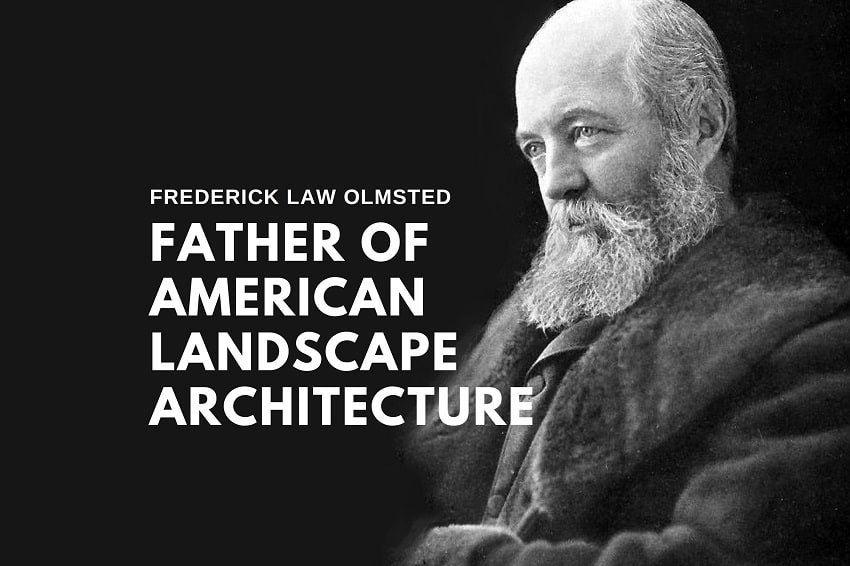
Frederick Law Olmsted. (Wikimedia Commons)
As one of the foremost landscape architects in the United States, Frederick Law Olmsted is often described as the father of American landscape architecture. Together with his partner, Calvert Vaux, he was involved in designing more than 500 iconic parks in the country, including Central Park in New York, the Boston Park System, and the Buffalo Park System.
Frederick Law Olmsted
Although Frederick Law Olmsted later became a towering figure in the landscape design arena, he had no formal training in that sphere. In fact, he did not even attend college. Most of his design learning happened on the job and from his extensive travels around the United States and abroad in Europe and China. He read widely and was influenced by the works of Johann Georg von Zimmermann, John Ruskin, William Gilpin, Humphry Repton, William Shenstone, and many others.
His unique design ideas also came from his intrinsic aesthetic sense and a deep love of nature that he had inherited from his father, John Olmsted. Growing up in Hartford, Connecticut, he had spent many of his childhood holidays travelling with his father in the picturesque locales of the North-eastern United States. Later, as an adult, he travelled in Europe and the formal gardens and parks he saw there made a great impression on him.
What set Olmsted apart from contemporary landscape designers was that he wasn’t merely focused on creating a visually appealing landscape. He wanted to design landscapes that moved the emotions of visitors and provided them with restorative relief. Towards this goal, he applied psychological principles to his landscape design.
Early life and career of Frederick Law Olmsted
Born on 26 April 1822, in Hartford, Connecticut, Frederick Law Olmsted belonged to a well-off, upper-class merchant family. He was a creative, hard-working student and, after graduating in 1838 from Phillips Academy, he intended to attend Yale College. However, his eyesight was affected by sumac poisoning and he had to give up on his college plans. He did attend a few science and engineering lectures at Yale after his eyesight improved, but he never took a formal degree.
For a few years, he tried his hand at different professions. He joined the merchant navy and worked for a year as an apprentice seaman, travelling all the way to China. He next managed a dry goods store for a while in New York. Later, in January 1848, his father helped him acquire a 125-acre farm Staten Island’s southern shore, and he named it Tosomock Farm and settled there until 1855 to practice agriculture.
In 1850, he took six months off to go on a walking tour in Europe with his brother and some other friends. His travels inspired him to write his first book ‘Walks and Talks of an American Farmer in England.’ Published in 1852, the book was well-received, and his descriptive writing skills brought him to the notice of the New York Daily Times.
After his farming enterprise went bust, the newspaper commissioned him to act as their correspondent in the Southern Confederate States. He travelled extensively and sent back insightful accounts of the local culture, farming, horticulture, gardening, and institutionalized slavery in those states. His report led to three books—A Journey in the Seaboard Slave States, published in 1856, A Journey Through Texas, published in 1857, and A Journey in the Back Country in the Winter of 1853-4, published in 1860.
Frederick Law Olmsted’s foray into landscape architectural work
In 1857, Olmsted became the Superintendent of Central Park in New York. He gained this position through the connections he had made while working as a journalist. He formed an acquaintance with the prominent landscape architect, Andrew Jackson Downing, and, through him, met the English architect, Calvert Vaux. Impressed with Olmsted, Vaux asked him to collaborate with him.
Together, they designed a landscape architectural plan called Greensward and submitted it in the Central Park design contest. The selection committee picked their design as the winning choice in 1858.
It was an auspicious start to a successful partnership that lasted until 1872.
Olmsted worked on the Central Project until 1861. At this point, he took leave of absence to serve with the United States Sanitary Commission as executive secretary. In this capacity, he was responsible for treating the Union army soldiers during the American Civil War. He left this position in 1863 to work as a manager at the Mariposa Estate, a gold mining venture near San Francisco in California. After that operation went bust, Olmsted returned to New York to rejoin Calvert Vaux and resume work on landscape design projects.
Between 1865 and 1873, they designed Prospect Park in New York. They also designed the Riverside community in Chicago. Other landscape design works included the park system in Buffalo between 1868 and 1876 and, in 1887, the Niagara Reservation at the Niagara Falls.
In 1883, Olmsted moved his family and his landscape architecture practice to Brookline, Massachusetts. He worked on designing the Emerald Necklace park system in Boston as well as the campuses of Stanford University, Smith College, the University of Chicago, and Wellesley College. He also designed the structures for the 1893 World’s Fair in Chicago and created eye-catching white fairground buildings in the Beaux-Art styles that won him much acclaim.
Frederick Law Olmsted’s landscaping concept
Rather than impose a pre-decided concept on a place, Olmsted was prone to studying the area’s natural features and planning his landscape design around these. All the elements in the landscape had to be subordinate to the whole picture, without standing out just for the sake of it. The plants and trees had to be natural to the region, non-invasive, low-maintenance, and planted in a natural manner. He did not favour ornamental groupings.
Due to this, there was nothing artificial or forced about his designs. Furthermore, thanks to the design simplicity and lack of unnecessary distractions, people didn’t consciously notice the design work. Rather, they felt so naturally immersed in the landscape that the experience was both soothing and restorative. It was exactly the effect he wanted.
The City Beautiful movement
Frederick Law Olmsted was majorly influenced by the City Beautiful movement that swept through US American cities from around 1893 till the Great Depression. The aim of the City Beautiful movement was to correct the damage wrought by the coming of the Industrial Revolution on US American cities.
The rapid growth of industries had led to an influx of workers from rural areas to the cities to work in the factories. That, predictably, created problems like overcrowding, unsanitary conditions, and spread of disease. It also led to civic problems such as social unrest, violence, labor strikes, government corruption, economic depression, and disease.
To address these issues and change the dismal state of the cities, many upper-middle-class women formed civic improvement societies between 1893 and 1899. Assuming that improving the living conditions would improve public morality, they proposed creating orderly cities with adequate water supply, proper sewage systems, and reliable urban transportation. They also wanted the cities to have open green places that would offer psychological relief to the workers who worked long hours indoors in the factories and, moreover, didn’t earn enough to afford vacations to the countryside.
Many US American cities, including Washington D.C., San Francisco, Detroit, Chicago, Denver, and Dallas, adopted the City Beautiful principles in their city planning.
Inspired by the City Beautiful Movement, Frederick Law Olmsted attempted to create soothing, restorative landscapes. As long as he could achieve that purpose, he wasn’t bothered about deviating from the then-prevalent tastes and fashions. It was on account of this originality that his landscape architecture has endured so well over the years.
Frederick Law Olmsted’s last years
His failing health forced Olmsted to retire in 1895 and leave his firm to his sons; their successors kept the firm going until 1980. As his condition deteriorated, Olmsted was admitted to the MacLean Hospital in Waverly, Massachusetts, and spent his last days gazing out on landscaped grounds that he had himself designed. He died on 28 August 1903, aged 81.
Many years after his death, the National Park Service bought Olmsted’s home and office, Fairsted, and turned them into a public museum, the Frederick Law Olmsted National Historic Site. His landscape architectural drawings and plans are at the Olmsted National Historic site, while his other work papers are at the Library of Congress.
Enjoyed this article? Also, check out “Amazon Spheres: An Unexpected Rainforest in the Amazon HQ at Seattle“.
Fact Analysis:
STSTW Media strives to deliver accurate information through careful research. However, things can go wrong. If you find the above article inaccurate or biased, please let us know at [email protected].
RELATED
The post Frederick Law Olmsted – Father of American Landscape Architecture appeared first on .
]]>The post Jim Corbett: A White Hunter Who Became Saviour of Tigers appeared first on .
]]>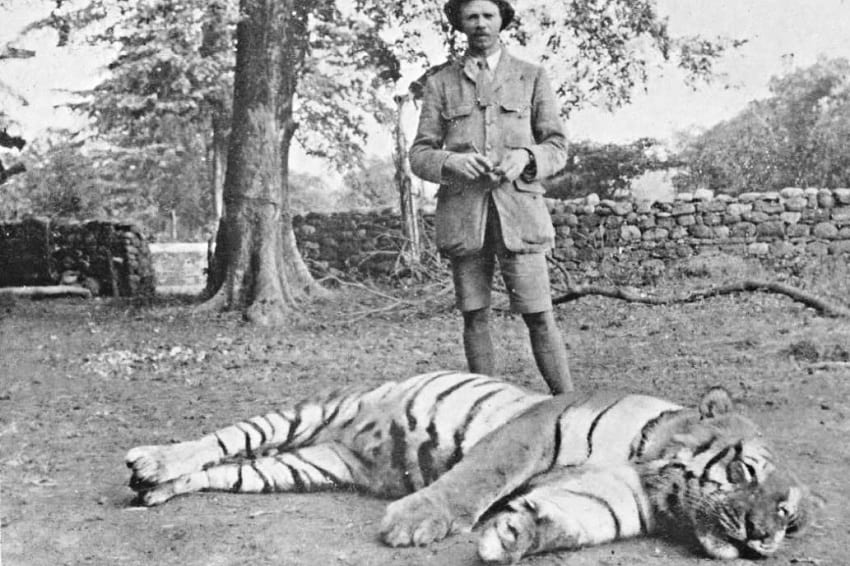
Jim Corbett with the freshly killed Tiger of Powalgarh. (Wikimedia Commons)
How many hats can a man wear in a lifetime? A railway employee, a contractor, a hunter, conservationist, family man, author, a celebrity, philanthropist, army officer, photographer. Jim Corbett, the British naturalist, born in colonial India as Edward James Corbett, wore all these hats. Tiger reserve of India, Jim Corbett National park, is a living testimony to this iconic Anglo Indian.
Jim Corbett’s father served at Dehradun and Nainital
Jim Corbett was born on 25th July 1875, at Nainital, in the Kumaon of Himalaya (present Uttarakhand). He was the 8th child of William Christopher Corbett and Mary Jane Corbett (2nd wife). William had married Ann Morrow while serving as Captain in the British army, at Dehradun in 1845. Ann died 2 years later, after giving birth to 3 children. In 1859 William left army service and became a postmaster in Nainital. There he met Mary Jane, a widow with 3 children, and married her. The newlyweds then had 6 children to look after and would be blessed with 8 more in the future.
In 1862, William shifted to Nainital. His sister and her husband died, leaving behind 8 children, of which, 4 would live with the Corbett family. On 21st April 1881, William died of a heart attack, leaving Mary Jane with the charge of 9 children, including the 6-year-old Jim.
Jim left studies to support his large family
Born and brought up in a big joint family, bonhomie and camaraderie came easy to Corbett. He had his schooling at Oak Openings School (now Birla Vidya Mandir, Nainital) but left studies at 18 to shoulder the family responsibilities. In 1892, he obtained a temporary job with the Bengal and North Western Railway as a fuel inspector at Manakpur, Punjab. Later, he became a trans-shipment contractor at Mokameh Ghat in Bihar, overseeing the movement of goods across the Ganges. His dedication to the welfare of his family would keep him from starting one himself, and he remained a bachelor all his life. His elder sister, who too didn’t marry, remained his companion and soulmate.
Served in the army during the world war 1
During the world war 1 he joined the army and commanded a unit of 500 men (Kumaon Labor Corps) in France. Promoted to the rank of major, he commanded the 114th Labour Battalion, in the third Afghan war (1919). For 16 years, from 1920 to 1936, he spent quality time, hunting and tracking in Tanganyika (present-day Tanzania), Africa. By 1930 he grew weary of hunting and found a better calling: shooting animals with 16 mm camera. Photography gave him greater joy than shooting with a firearm. He gave up hunting and took up the cause of conservation of wildlife.
Taking on man-eating tigers became his prime call
The defining part of Corbett’s career as a hunter, began with a Bengal tigress, in 1907. Killing it established his image as a devious hunter, and at the same time kindled in him an appreciation for wildlife. For, he realized that tigers turned man-eater when incapacitated due to injury or old age. The feline had lost two canine teeth to a bullet that failed to kill her. Unable to catch on her natural prey base, the big cat turned to an easier option – killing humans for food. Champawat had claimed 436 human lives and was a reigning terror in Kumaon area in 19th century India. Attempts at containing the cat had failed, and a jittery British government commissioned Jim Corbett into the task. Following a tip-off, he reached the village Champawat and saw remains of a woman victim. A human chain was formed to force the animal to move into anambush. A trap was laid and the tigress was shot down in a daredevil encounter. That was the end of the tigress, posthumously named as the Champawat man-eater.

Jim Corbett with the Leopard of Rudraprayag. (Wikimedia Commons)
Another credit for Jim was Panar Leopard (1910) that killed about 400 people. Jim’s first attempt was an anticipated shot in the dark. The hit animal was tracked in the wood with searchlights and killed in the second attempt.
Talla-Des man-eater that claimed 150 human lives in a span of 2 years, was exterminated it in 1929. Her two grown-up cubs were also killed. The man-eater was spotted through a blood trail leading to a thicket of ferns. Two rounds of bullets fire killed the animal on spot.
Jim Corbett narrates in his book The Jim Corbett Omnibus:
“When I saw the two tigers lying asleep I concluded that the man-eater had found a mate, but later, when my third shot flushed a third tiger, I knew I was dealing with a tigress and her two cubs. Which of the three was the mother and which the cubs it was not possible to say, for all three looked about the same size when I had viewed them over the sights of my rifle….The cubs had died for the sins of their mother.”
Man-eating leopard of Rudraprayag had killed 125 villagers. Leaving human bodies unburied in epidemics had (including Panar leopard) hooked it to the human flesh. Jim eliminated it in the year 1925.
Mohan man-eater, a terror in settlements of Kosi valley was killed in 1929. The tiger was sleeping. For once Jim reflected on ethics of gaming a sleeping life. But the fact of its being a man-eater prevailed.
A group of 3 man-eaters from Kumaon division, reported in 1929, was the next pick. The hunt led to Chowgarh Tigress and her grown-up cub, responsible for 64 killings. Jim began his hunt from Kala Agar forest. In his first attempt, the cub got killed. The thread of the mission was picked up in February 1930. Buffaloes, used as bait attracted 2 tigers and 2 leopards which were not man-eaters but got killed under that impression. The dogged search for the man-eater concluded on 11th April 1930. Jim suddenly found himself dangerously close to the man-eater. The tigress, just 8 feet away, could pounce on him any second. Jim gathered his wits and shot the animal dead. By any reckoning, it was the toughest challenge he faced in his lifetime.
Chukka man-eater was a male Bengal tiger that killed 3 boys of village Thuk in Ladhya Valley in 1937. After repeated attempts, it came under the firing range of Jim, perched on a tree at a strategic location. Two bullets were fired and the animal fell lifeless. This was 2nd last in Corbett’s man-eater kitty. The last one was the Thak man-eater, a Bengal tigress that killed 4 humans in 1938. It fell to Jim’s on 30th November 1938.
His experience as a hunter made him a lover of wildlife
Increasing empathy towards the wild during his hunting days made Corbett a staunch conservationist and he took up the cause of protecting wildlife from human interference. He worked tirelessly to establish Hailey National Park in 1936. The park, a beacon light of conserving forests and the wildlife, was later renamed Ramganga National Park and finally, after his name, as Jim Corbett National Park in 1957. Jim Corbett authored 6 books penning his life experiences and conveying his message of living in harmony with nature.
Jim Corbett National park
Located in scenic surroundings of Himalayan foothills and the Shivaliks, Jim Corbett National Park is a popular tourist destination in India. Spread in an area of 520 square kilometres at Nainital, Uttarakhand, it is home to a wide spectrum of wildlife. Project Tiger, launched in 1973 for the protection of the endangered species of Asian tiger, began from here. It is home to 650 species of birds and 5 species of deer. A good number of otters, crocodiles, elephants, pigs, tigers, leopards, bears and reindeer etc. make it a vibrant exposition of wildlife in its natural surroundings. Visitors to the park, go in a jeep/canter safari to see the wild in its pristine form.
Two houses of the Corbett family are tourist attractions
The winter house of the Corbett family was located in Kaladhungi, a forest area in the Himalayan foothills, popularly called Corbett’s village. The house was converted into a museum in 1967. Another house of Corbett’s, on the slopes of Ayarpatta hill in Nainital, named Gurney house is now owned by Varma-Dalmia family. Visitors to the national park, however, allowed to see this heritage home.
Criticism and controversies
In 1947, Jim Corbett, along with his elder sister, left India for Kenya, where he died at the age of 80. Corbett’s illustrious career has its own share of criticism. Some scholars feel he was just an extension of India’s colonial masters who raised hunting as a popular sport. This led to hunting on a wider scale. A large number of tigers survived a shoddy hunt, to live with injury and incapacitation. Such injured felines, they aver, turned on human beings. And, Jim was strategically positioned as the saviour of the forest dwellers. His positioning as a friend of villagers won the British government the goodwill of the local population. Those were the days of India’s freedom struggle when the colonial rulers were generally doubted by the Indians. Some have accused Jim of exaggeration in his writings. Another criticism is in respect of an Indochinese subspecies of tiger, panther tigris corbetti. The name, it is argued, is not after Jim Corbett as claimed by many. Actually, it is after a Researcher of Natural History, Gordon Barclay Corbet (Jim Corbett has ‘tt’). Jim has also been accused of killing many felines which were not man-eaters, and killing just for sport.
Overall, a perfect gentleman
Nevertheless, his image as one who saved men from tigers, and subsequently tigers from men, survives controversies. Villagers loved him and admired him in spite of being a white man. He is still fondly and reverentially remembered by the inhabitants of the places where he lived and worked. This, coupled with the body of work he gifted to the posterity, will keep Jim Corbett immortal in the annals of history.
Enjoyed this article? Also, check out “Tsavo Man-Eaters: A Pair of Rogue Lions That Killed Nearly 135 People“.
Fact Analysis:
STSTW Media strives to deliver accurate information through careful research. However, things can go wrong. If you find the above article inaccurate or biased, please let us know at [email protected].
RELATED
The post Jim Corbett: A White Hunter Who Became Saviour of Tigers appeared first on .
]]>The post Osamu Tezuka: The Walt Disney of Japan appeared first on .
]]>
Osamu Tezuka. (Unknown)
Osamu Tezuka, also known as the ‘Walt Disney of Japan’ was a renowned manga craftsman, sketch artist, artist, and filmmaker. He was born on 3rd November 1928, in Toyonaka, Osaka (Japan). His productive yield, spearheading strategies, and creative redefinitions of classifications earned him high accolades and he came to be regarded as the ‘The Father of Manga’.
He is frequently viewed as the Japanese equivalent of Walt Disney, who filled in as a noteworthy inspiration during Tezuka’s developmental years. Tezuka didn’t just change the fate of manga, he practically transformed anime into the global phenomenon that it is today. Tezuka started what was known as the manga insurgency in Japan with his “New Treasure Island” which was distributed in 1947.
Early Life: From being bullied to finding solace in Disney
Tezuka was the oldest child of Yutaka and Fumiko Tezuka. The Tezuka family was prosperous and knowledgeable. While his father Yutaka worked in the executives at Sumitomo Metals, his mother’s family had long served the military. At the age of five, Tezuka’s family moved to the town of Kohama, in Hyogo prefecture (present-day city of Takarazuka). When he was seven, he got admitted to Osaka city Ikeda primary school. Because of his diminutive stature, he was tormented a great deal in school.
Tezuka’s father was a massive fan of comics and enlivened motion pictures, and he would do a private screening of films he purchased at his home. When his father first introduced him to Disney films, he ended up fixated on the movies and started to imitate them. He became huge Disney motion pictures fan himself, seeing the movies on numerous occasions in succession. His favourite Disney film was Bambi, which he watched countless times. His mother was a decent storyteller, and would recount stories to a young Tezuka. This initiation to storytelling at a formative age, later enabled Tezuka to compose story-length funnies, which were as energizing as viewing a motion picture. Tezuka was also fascinated by the works of Suiho Tagawa and Unno Juza.
Becoming the godfather of manga
Throughout his illustrious career, Tezuka was involved in numerous projects which were integral in the Manga revolution in Japan. His amazing yield would bring forth perhaps the most compelling, fruitful, and generally welcomed manga arrangements, including most notably “Jungle Emperor”, “Astro Boy”, “Tetsuwan Atom”, “Black Jack”, “Magma Taishi”, “Mitsume ga tooru” “Message to Adolf”, “Pheonix” and “Buddha“- all of which won several accolades with “Pheonix” being his masterpiece. Throughout his profession, Tezuka made and composed more than 700 manga arrangements- involving 170,000 pages of drawings, and another 200,000 pages of anime storyboards and contents.
Production career: Creating a living picture
Tezuka entered the animation industry in 1961 and founded Mushi Productions. With his initial innovations and experiments, “Astro Boy” was broadcasted in 1963 as the first locally delivered energized program on Japanese TV. The 30-minute program lasted for endless weeks on TV (of which 193 scenes were created) served as a catalyst for the anime wave in Japan. “Astro Boy” wound up one of the best manga and anime establishments and sold more than 100 million copies around the world, making it the tenth-top rated manga arrangement ever. It has been highlighted on various ‘Most Noteworthy Anime Ever’ records and has inspired a slew of creators in their own work. It also became the first Japanese anime series to be broadcast overseas.
“Jungle Emperor” is also a notable mention for becoming the first Japanese animated series to be produced in full colour. In 1968, Osamu Tezuka founded a Japanese animation studio named Tezuka Productions Co. Ltd. The studio is extremely popular for having animated the likes of the “Astro Boy” series, “Marvelous Melmo”, and “Dear Brother”, to name a few.
The Walt Disney of Japan: Influences of Disney in Osamu Tezuka’s works
Osamu Tezuka is not just viewed as a manga artist with one of the most extensive bodies of work, but also as one of the most lauded in the field. His signature style borrowed from Walt Disney, the method of drawing characters with the enormous rounded expressive eyes which tell a story of their own. The Vitalist idea of life left a profound impression on Tezuka as well. The impact of Walt Disney upon Tezuka’s style and creative vision is enormous. Since early on, Tezuka had a resolute dedication to Disney, and even as a grown-up, he continued to watch Bambi on different occasions. The impact of Disney goes further into the topical level by taking references from Bambi into his own work, for instance, in “Jungle Emperor”.
Personal life and interests
In 1959, Tezuka wedded Etsuko Okada at a Takarazuka Hotel. Their child Makoto Tezuka went on to become a movie and anime director. Tezuka also guided some notable personalities such as Shotaro Ishinomori and Go Nagai.
The Japanese artist also had a keen interest in Baseball and authorized the “grown-up” variant of his character Kimba the White Lion as the logo for the Seibu Lions of the Nippon Professional Baseball League. As mentioned previously, he was an avid follower of Walt Disney and in 1964, he got the opportunity to finally meet his idol at the New York World’s Fair. In 1986, Tezuka expressed that Disney needed to enlist him for a potential sci-fi venture. Tezuka was an enthusiast of the Superman franchise and was made a privileged executive of the Superman Fan Club in Japan.
Death and legacy of the “father of manga”
Osamu Tezuka passed away on February 9, 1989, at the age of 60 in Osaka Honshu, leaving behind a legacy that would inspire future artists, filmmakers, and manga-enthusiasts to follow his footsteps. Artists, for example, Akira Toriyama (“Dr. Droop”, “Lady Red”, “Dragon Ball”) have been indebted to Tezuka for stylistic inspiration and motivation for their work.
In 1990, The National Museum of Modern Art in Tokyo organized an open display of Dr. Tezuka’s works in 1990. It was the first-ever for a commercial manga artist. The Japanese government released stamps to commemorate him in 1997. From 2003, the Japanese toy organization Kaiyodo started producing a progression of figurines delineating Tezuka’s art. The impact that Tezuka has left on manga artists is unquestionable, and his contributions in the industry that led to anime and manga becoming the global phenomenon that it is today, is incomparable.
Enjoyed this article? Also, check out “Neuschwanstein Castle: The Iconic Bavarian Castle That Inspired the Disney Castle“
Fact Analysis:
STSTW Media strives to deliver accurate information through careful research. However, things can go wrong. If you find the above article inaccurate or biased, please let us know at [email protected].
RELATED
The post Osamu Tezuka: The Walt Disney of Japan appeared first on .
]]>The post Mansa Musa: The ‘Golden’ Emperor of Mali Who Was Reputedly the Richest Man Ever appeared first on .
]]>
Artistic impression of Mansa Musa and his army. (HistoryNmoor / Wikimedia Commons)
Imagine being so rich in today’s times that the tokens of appreciation and gifts you gave to a country for their generosity could cause an economic meltdown in that nation! Such is the tale of an African king, who lived during the Middle Ages and had so much wealth in gold that none of the richest tech giants, affluent business magnates or monarchs of the modern world could outdo him even today. Mansa Musa I of Mali unarguably remains the richest man of all time to ever live in human history.
Story of Mansa Musa’s life
Although not much is known about his birth, the earliest records state that Musa was born in the year 1280 into a family of emperors. Related to the first muezzin in Islam, Bilal ibn Rabah, Musa was the great grand-nephew and a direct descendant of Sundiata Keita, the founder of the Mali Empire.
He became the tenth king of the present-day West African country of Mali through regency, and his ascension to the throne was not easy. Musa narrated the account of his coronation to a 14th-century Syrian historian Shihab al-Umari, who mentioned it in one of his documents. It is said that when the king before Musa – Mansa Abu Bakr II – renounced his claim to the throne to explore what was west of the Atlantic Ocean in the year 1312, he took along a large fleet of ships and an entourage of slaves with him to satisfy his wanderlust.
But little did anyone know that his second expedition to the edge of the Atlantic would become the last he would ever undertake. He went missing, never to return. Before his voyage, Abu Bakr II had conferred the regency on Musa to make decisions in his stead, until he returned, in the best interest of their kingdom. So when the sultan did not come back from his voyage after a long period of waiting, an urgent need for a Mansa (ethnic West African tribe of Mandinka used the word mansa, which translates to emperor) arose. That is when Musa decided to take over the reins of the Malian kingdom and was coronated as Mansa Musa I.
The flourishing Mali Kingdom under Mansa Musa’s rule
During the mid-1300s, Europe had become cash strapped and impoverished with civil wars breaking out frequently. But the continent of Africa was flourishing and Mansa Musa left no stone unturned to expand the boundaries of his kingdom. Before Mansa Musa came into power, the realm of Mali was already rich in gold supplies. And when he took over in 1312, he became even more powerful and began to conquer the neighbouring territories on the west of the African continent. His kingdom spread a little over than three thousand kilometers and stretched all the way to the coast of the Atlantic Ocean. He seized control over as many as twenty-four African regions, which include the modern-day countries of Mauritania, Niger, Chad Republic, Senegal, Gambia, Burkina Faso and Nigeria and parts of Guinea-Bissau. Documented records state that the Malian Kingdom under Mansa Musa’s rule stood second in size after the great Mongolian Empire.
There was plenty of natural resources in the kingdom and commodities like salt and gold were in high demand worldwide during those days. Renowned Moroccan explorer and scholar Ibn Battuta mentioned in his accounts that only a year of production could yield a tonne of gold in Mali and that is how the empire kept prospering under the reign of Mansa Musa. During Musa’s rule, Mali alone accounted for almost half of the world’s gold. Trade flourished and the historical city of Timbuktu became the most important hub of business during his reign.
Mansa Musa’s historic pilgrimage to Mecca
Mansa Musa was a devout Muslim and in the year 1324, he undertook a trip of over six thousand kilometers to the holy land of Mecca to perform his Hajj and that was when the world came to know of an African king, who was so rich that he made other kings look like paupers. His travel did not come cheap. Mansa Musa travelled for his pilgrimage, spanning the length of the Sahara Desert with a large convoy and a herd of animals that was a sight for the onlookers to behold. Most documents say that he travelled with as many as two hundred thousand men, but the exact numbers have been varying in some accounts.
His retinue included forty thousand soldiers, courtiers, royal officials, entertainers, heralds, twelve thousand slaves and hundreds of camels and horses, along with several flocks of sheep and goats to provide meat on the journey. As many as five hundred servants were in attendance to his senior-most wife. It appeared as if an entire city was on the way to the pilgrimage through the desert. All of Mansa Musa’s courtiers were dressed in fine Persian silks and gold brocade. His slaves wielded gold staffs that weighed approximately 2.7 kilograms each and every single out of the hundreds of camels is said to carry roughly 135 kilograms of pure gold on it.
When Mansa Musa passed through Egypt
While Mansa Musa’s vast caravan was on the way to Mecca, it passed through Egypt’s capital city of Cairo, where such a rare grandeur was on display for the first time ever. It caused mass hysteria, which as per the documents of Shihab al-Umari, eventually led the ruler, al-Malik al-Nasir to summon Mansa Musa. It was mandatory for a visitor to greet the Egyptian sultan by kissing his hands and feet but Musa refused saying he was on his way to perform his Hajj and in no way would he bow down before anybody else but his God. This made the sultan to finally greet him with respect and admiration and the two kings exchanged pleasantries for a while. The Egyptian sultan played the perfect host to Mansa Musa’s entire retinue for a three-month stay.
As the entourage began on their onward journey, Mansa Musa, in a gesture of his humility, gave away gold to people as gifts. He even flooded the markets with gold dinars purchasing local and foreign commodities. Although gold was in short supply in Cairo in those days, Musa’s generous gifts in gold led to the value of bullion dropping very drastically. His well-intentioned donations led to a cash catastrophe. The depreciation of the precious metal caused a massive financial crunch and the gold market crashed. When Mansa Musa returned from his pilgrimage and passed through Cairo again, he tried to help Egypt recover from the meltdown. He took away some of the gold from circulation by borrowing it for an exorbitant interest rate, yet it took a little more than a decade for the desert country to get back on its feet.
Mansa Musa’s significant contribution to Mali
A generous man, offering to charity at every opportunity, Mansa Musa, on his return trip to Mali from Mecca, purchased lands for his men to stay. He acquired lands in Gao, a territory in the Songhai kingdom, where he commissioned the building of mosques, palaces and audience chambers. Apart from wealth and power, he sought knowledge and brought back Islamic scholars and poets to spread the word of God in his kingdom. Mansa Musa also allowed individuals to practice their own faith and never forced his religion on his people nor was he in favour of conversions. As his empire kept expanding with time, he separated all the territories under his rule and divided them into provinces, appointing governors to oversee them, who reported back to him.
From his travel, he also brought back an Andalusian architect named Abu Ishaq Ibrahim Al-Sahili to build study centres and mosques in Timbuktu. This architect from Granada in Spain went on to construct the iconic Djinguereber Mosque in 1327, which is still standing tall and serving its purpose for a little close to seven hundred years. For this masterpiece, Mansa Musa is said to have paid 200 kilograms in gold to Abu Ishaq, which in today’s times would be approximately equal to 8.2 million US dollars.

Djinguereber Mosque. (JM / Flickr)
Mansa Musa urbanized Timbuktu and commissioned construction work of libraries, schools and art centres. He is also credited as the first person to encourage traditional education in West Africa. Timbuktu became an educational center and students from all over the world came to study at Mali during its golden period.
Mansa Musa I of Mali reigned for about 25 years and died in the year 1337, leaving its reins to his son Mansa Maghan I. But the stories of his great fortune still come as a surprise.
Enjoyed this article? Also, check out “Hetty Green: The Richest American Woman Who Was Known for Her Extreme Miserliness“.
Fact Analysis:
STSTW Media strives to deliver accurate information through careful research. However, things can go wrong. If you find the above article inaccurate or biased, please let us know at [email protected].
RELATED
The post Mansa Musa: The ‘Golden’ Emperor of Mali Who Was Reputedly the Richest Man Ever appeared first on .
]]>The post Zaha Hadid: The Prominently Leading Woman Architect Who Ruled the Roost in a Man’s World appeared first on .
]]>
Zaha Hadid in 2013. (Dmitry Ternovoy / Wikimedia Commons)
It is said that a woman is the architect of society; but little did they know that one woman would actually go on to become the architect of the world in the truest sense of the word. Dame Zaha Hadid, the celebrated Iraqi-British architect, best remembered for her ideas of deconstructivism and the curves she added to every piece of building she designed across the globe. Though the gifted architect passed away in the year 2016, her work still continues to inspire budding talents that hope to walk in her footsteps someday.
Zaha Hadid’s early life and education
Born in Baghdad, Iraq in 1950, Zaha grew up in a moderate and secular Middle Eastern country, where girls had equal opportunities as boys during those days. The Iraq of her times was neither war-torn nor was it stricken with misery like it is today; instead it had a more Westernized outlook and approach and had an economy that was rapidly growing. During her childhood days, there were a lot of women who had made a name for themselves in different fields of profession, but there was not a single woman architect that Iraq had ever produced. Confident and determined from the very beginning, Zaha had made up her mind to do something that no woman had ever done before. Her influential family, comprising of her father – Muhammad al-Hajj Husayn Hadid – an industrialist, economist and politician par excellence, her mother Wajeeha Sabonji – an artist, and her brother – Foulath Hadid – a prolific writer and expert on Iraqi affairs – strengthened her resolve further to make a mark for herself in whichever field of work she chose.
After she completed her elementary education from boarding schools in England and Switzerland during the late 60s, Zaha enrolled for her mathematics majors in the American University of Beirut. Later in 1972, she moved to London to pursue architecture from the world renowned Architectural Association School of Architecture, where she studied under future great architects like Rem Koolhaas, Bernard Tschumi, Will Alsop and Daniel Libeskind to name a few. Although the 70s was a time when the trend of swinging more towards historicism and post-modern styles of architecture was prevailing, Zaha had her own ideas of design. She was strongly influenced by the work of her professor Koolhaas, who was working on principles of neo-modernity in architectural style during that time. When Zaha graduated in the year 1977, Koolhaas offered her a partnership job at his and Elia Zenghelis’ (Zaha’s another tutor) Office for Metropolitan Architecture (OMA) firm in Rotterdam, in the Netherlands, but her career at the OMA was very short-lived. She had other better and bigger plans.
Zaha Hadid’s career get-going in architecture
Before launching her own brand ‘Zaha Hadid Architects’, Zaha taught at her alma mater for some time, while polishing and honing her own architectural drawing skills in the meanwhile. She emphasized more on the suprematist style, the Russian art movement of the 20s, which focused on geometric forms and patterns using a limited range and blend of colours. She created her own art form, terming it ‘fluid kind of spatiality’, which represented the changeable modern life from her perspective. People in the field had named her ‘the inventor of the 89 degrees’, for she never created anything that stood perpendicular to the ground. Her designs were always less than 90 degrees in one way or the other.

Haydar Aliyev Center in Baku, Azerbaijan designed by Zaha Hadid. (Investigation11111 / Wikimedia Commons)
She had a broader sense of space and she never paid enough attention to minute details first. Zaha’s sense of perception and the way she designed a sketch was mind-bending, as the shapes seemed to morph into something else entirely while one passed through them. She dabbled more in shadow work along with indefinite and mostly confusing design forms. Though Zaha was more into abstract forms of design, something that wasn’t very popular back then, her idea wasn’t very well received in the initial stages of her career.
Modest beginnings in the field of architecture
While Zaha was confident that she would carve a niche for herself in the field of architecture, it took a long time for her drawings to be recognized the world over. Clients willing to invest money in her designs could not fully understand her idea of art; because her architectural drawings, which were well ahead of their time, weren’t functional as far as constructing an actual building based on them was concerned.
In the year 1982, when Zaha won a competition to design a spa called The Peak in Hong Kong, it looked as if her career had received a head start. But it was not the case. The plan was abandoned more quickly than it was taken up. The plan never materialized and it was only when she designed the Vitra Fire Station in Weil am Rhein on the German-French and Swiss border that her hard work had finally been recognized. Though the fire station was later converted into a museum, Zaha had eventually found her true calling.
Zaha Hadid’s work gained momentum
A naturalized citizen of the UK by the late 70s, Zaha began working her way from small edifices in the country to slowly and steadily making waves on the international architectural scene. First building a ski jump in Innsbruck, Austria, between the years 1999 and 2002, which also had a cafe and a panoramic view of the mountains, she worked in the United States, where she had won commissions to design two art museums – a first for a woman in America. Coincidentally, she was competing against her own mentor and dear friend Rem Koolhaas. By the mid 2000s, Zaha had started winning international competitions, which allowed her to convert her unusual architectural drawings into designs for the whole world to see. The Phaeno Science Center in Wolfsburg, Germany, built between 2002 and 2005 was one of her most ambitious projects. Not only was the building functional but it also had space for recreational activities underneath the main structure. The building, which resembles a gigantic ship, is complete with a café, a shop and an entrance to the museum upstairs.

Phaeno Science Center in Wolfsburg, Germany. (maraCZ / Flickr)

The ground floor of the science center. (Spyrosdrakopoulos / Wikimedia Commons)
More notable works of Zaha Hadid
Zaha Hadid’s designs on paper had begun dotting the world in reality, with countless countries having one of her creations in at least one of their cities. She had achieved a celebrity status and her building designs had gained a landmark status by the mid 2000s and that had cemented her position amongst the topmost women in the field. After the Contemporary Arts Center in Cincinnati, USA, another museum project came her way. This time it was in Copenhagen, Denmark, where she designed an extension for the already constructed Ordrupgaard Museum, using only diagonal lines.

Ordrupgaard Museum extension by Zaha Hadid. (jelm6 / Flickr)
During the same years, she won a commission for designing the Administration building of BMW Motors in Leipzig, Germany. The interiors of the first floor, consisting of 30 rooms of the Hotel Puerta America in Madrid, Spain had brought her laurels.
Zaha Hadid’s major architectural ventures
By the late 2000s, Zaha Hadid had begun working on major reputed projects, some of which included the Salerno Maritime Terminal in Italy, the Napoli-Afragola High Speed Train Station in Naples, Italy, a unification of three government buildings including a multimedia library, a public archive and a sports department called Pierres Vives in Montpellier, France and Opera Houses in cities like Guangzhou in China and Dubai in UAE. She designed a private residence in Moscow for a Russian citizen – Vladislav Doronin – called the Capital Hill Residence, which happens to be the first and only private property Zaha ever worked on. In Glasgow, Scotland, she designed the Riverside Glasgow Museum of Transport, which is a striking structure of zigzag lines and patterns.

Inside the Napoli Afragola railway station. (Pivari.com / Wikimedia Commons)

Pierres Vives by Zaha Hadid in Montpellier, France. (Marc Meynadier / Flickr)
Prominent projects and unfinished works
While her adopted home country was set to host the Summer Olympics in 2012, Zaha Hadid designed the Aquatics Centre, which became an icon in itself. Designed like the fluidity of water, in her own words, the London Aquatics Centre became the talk of the town, with even Olympic-winning swimmers praising her work. Zaha Hadid passed away in 2016 in Florida, USA, due to a sudden heart attack at the age of 65 and left some of her work unfinished. The work on Beijing Daxing International Airport in China, currently under construction was taken up by Zaha’s architectural firm, which will also be one of her several other posthumous projects. The Scorpion Tower or the One Thousand Museum in Miami, Florida, which is a residential high-rise condo, will also be completed by her firm post her death. The list also includes the Al Wakrah Stadium, now known as Al Janoub Stadium in Qatar, which will be the venue for the 2022 FIFA World Cup set to be held in the country.

Bridge Pavilion designed by Zaha Hadid for the Expo 2008 in Zaragoza, Spain. (Grez / Wikimedia Commons)
Awards won by Zaha Hadid
While there are a lot of awards that Zaha had won in her long and fruitful career, the high-ranking Pritzker Architecture Prize, which is the Nobel Prize equivalent in architectural parlance, was the one she cherished the most. She also became the first woman to receive the honour of the Pritzker Prize in 2004. Zaha also won the Royal Institute of British Architects (RIBA) European Awards in different years for her diverse construction designs that had been built the world over. For her peculiar projects and architectural designs, Zaha also received UK’s most esteemed architectural award – the Stirling Prize – in two different years. She also became the first and only woman to win the Royal Gold Medal by the RIBA in 2016. She was appointed the Commander of the Order of the British Empire (CBE) in 2002 and made a Dame Commander of the Order of the British Empire (DBE) in 2012 for her services in the field of architecture. Internet giant Google, too, celebrated her achievements with a doodle on its home page in 2017. Several other international awards from different countries were also bestowed upon her for her unrelenting and dedicated service in the field of structural design.

Jockey Club Innovation Tower by Zaha Hadid in Hong Kong. (Iwan Baan / Forgemind ArchiMedia / Flickr)
The dynamic Zaha Hadid became a name that had come to stay in the business. The kind of designs she created in architecture became synonymous with her ideas and it was difficult to push her aside. A woman standing tall like her architectural pieces in a male-dominated field, Zaha has left a huge shoe that will take a long time to be filled. Her work across the world will stand testimony to the fact that even after she passed away, her art will continue to be literally looked up on.
Enjoyed this article? Also, check out “Mae Jemison: The First African-American Woman in Space Had an Illustrious Career from Medicine to Cinema“.
Fact Analysis:
STSTW Media strives to deliver accurate information through careful research. However, things can go wrong. If you find the above article inaccurate or biased, please let us know at [email protected].
RELATED
The post Zaha Hadid: The Prominently Leading Woman Architect Who Ruled the Roost in a Man’s World appeared first on .
]]>The post Mae Jemison: The First African-American Woman in Space Had an Illustrious Career from Medicine to Cinema appeared first on .
]]>
Astronaut Mae Jemison in Spacelab-J. (NASA on The Commons / Flickr)
Born in the state of Alabama in the year 1956, Mae Jemison made history as the first African-American woman to become an astronaut. After her family moved to Chicago when Mae was merely a 3-year-old child, she started developing a keen interest in science. She was greatly influenced by her uncle who first ignited her passion in the field. Mae’s main area of fascination was the vast mystery presented by Space. Her parents never stopped her from being curious, and in fact, supported her. Soon after, she started showing enthusiasm for subjects such as anthropology, astronomy and archaeology, thus widening her interests.
The sky is not the limit
Jemison was only 16 when she enrolled herself at Stanford University on scholarship. She was a determined girl, and her innate genius was evident when she graduated (from) Stanford University with degrees in both chemical engineering and Afro-American Studies. Not being the end of her educational accomplishments, she also enrolled herself at the Cornell Medical College. She graduated with a doctorate in medicine in the year 1981. Apart from her fluency in English, she soon became fluent in 3 other languages, namely, Russian, Japanese and Swahili.
Jemison practised medicine across three continents- North America (Los Angeles, California), Asia (Cambodia) and Africa. She volunteered at a Refugee camp in Cambodia. She also worked with the Peace Corps as a medical officer in West African countries like Sierra Leone and Liberia for over two years.
Working towards the goal
After spending time with the Peace Corps, Mae applied at NASA’s astronaut program upon her return to the United States, to pursue her dreams. She looked up to Sally Ride, who became the first American woman astronaut in space in 1983, as her idol. As fate would have it, the program she applied to was put on hold as a consequence of the explosion of the Challenger in 1986. Jemison was selected for the NASA Astronaut Group 12 after it was re-opened in 1987. She became one of the fifteen candidates that were selected out of a number of roughly two thousand or more applicants. With determination, Jemison completed the program after a year as a mission specialist in 1988.
A dream come true
History was made on September 12th, 1992, when Jemison went aboard the space shuttle Endeavour along with 6 other astronauts. The mission STS-47 carried the astronauts on 126 orbits around the Earth. With the lift-off of this historical mission, Mae Jemison became the first African-American woman astronaut to enter space and orbit the Earth. During her time in space, she also did research and experiments on weightlessness and motion sickness. On September 20th, Endeavour landed at the Kennedy Space Center in Florida. Jemison logged her voyage in space for 190 hours, 30 minutes and 23 seconds.

Mae C. Jemison along with her crew members of STS-47. (NASA)
After space
Mae Jemison resigned from NASA in March 1993, in favour of pursuing her other dreams involving social sciences and technology. She first became a professor teaching environmental studies at Dartmouth College and then a professor at Cornell University. She became the founder of The Jemison Group Inc, her very own consulting firm. The company focuses on young students to develop and find their love for science and advancing technologies in schools worldwide. Jemison’s company also encourages young people to be curious and ask questions. Jemison also founded a science camp called ‘The Earth We Share’ for young high school students. She worked at the World Sickle Cell Foundation from 1990 to 1992 as a member of the Board of Directors. Till date, Jemison supports young people interested in science and education. Jemison’s love and fascination for science, in fact, knowledge in general, is pretty overwhelming. Mae Jemison is now serving as the Principal of the 100 Year Starship Organization.
Jack of all trades, master of many
Besides science and academics, Jemison was a passionate dancer and was in love with the form since the age of 11. She mastered various kinds of dance styles, in particular, African dancing, jazz, modern and ballet. Jemison even tried her luck and auditioned for the lead role of Maria in West Side Story. Unfortunately, she did not get the lead but did make it as a background dancer. She even choreographed a host of dance routines. In 2001, she published her own book called ‘Find Where the Wind Goes: Moments from My life’. The book is mainly targeted at children and tells of her life experiences, starting from her childhood to her tryst in space. It also talks about the discrimination she faced as a student, and how she emerged victorious.
Jemison had always been a huge fan of the American actress Nichelle Nichols. Nichols’ role of Lieutenant Uhura, a communications officer in the Star Trek television series, inspired Mae to dream of space. Inspired, Jemison herself made a cameo in an episode of ‘Star Trek: The Next Generation’ called ‘Second Chances’. Nichelle Nichols even paid a visit to Jemison during the filming of the episode. Jemison also went down in history as the first real female astronaut to appear in a television series.
Mae Jemison – A much-lauded individual
Being the all-rounder she is, Jemison received several awards for various accomplishments. She was awarded the ‘Essence’ Science and Technology Award in 1988. In 1990, she was named the Gamma Sigma Gamma Woman of the Year. She was also awarded Ebony Magazine’s ‘Black Achievement Award’ in 1992. Apart from these, in 1991, Jemison was included in McCall’s ‘10 Outstanding Women for the 90’s’. In 1993, she was welcomed into the fold of the National Women’s Hall of Fame. Dartmouth College, where Jemison was a professor, awarded her the ‘Montgomery Fellowship’.
Mae Jemison believes that space and its resources belong to everyone and not just any particular group. Her admiration for science and her determination to explore an arena unfamiliar to her parents and family was noteworthy. She didn’t give up on her dreams despite the discrimination she faced in academia, and the racial remarks passed by her professors. She was too fixated on her goals and passion to allow circumstances to bring her down. Even today she continues to inspire us to think big, evolve and work harder. Her life is also an inspiration for parents to support their child’s interests, and draw out the best in them. Jemison’s parents gave her leave to dissent, to question, to explore, and develop into her own person. Her life experiences teach us to listen to our inner voice and embark on a journey towards self-discovery and success.
“Pay attention to the world around you and then find the places where you think you’re skilled. Follow your bliss–and bliss doesn’t mean it’s easy!”
—Mae Jemison
Enjoyed this article? Also, check out “Jack Parsons: The Sex Occultist Who Was Key in Sending America to Space“.
Fact Analysis:
STSTW Media strives to deliver accurate information through careful research. However, things can go wrong. If you find the above article inaccurate or biased, please let us know at [email protected].
RELATED
The post Mae Jemison: The First African-American Woman in Space Had an Illustrious Career from Medicine to Cinema appeared first on .
]]>The post A Cross-Dressing Explorer, Isabelle Eberhardt Crossed Geographic and Social Boundaries to Follow Her Heart appeared first on .
]]>– As stated by Isabelle Eberhardt.
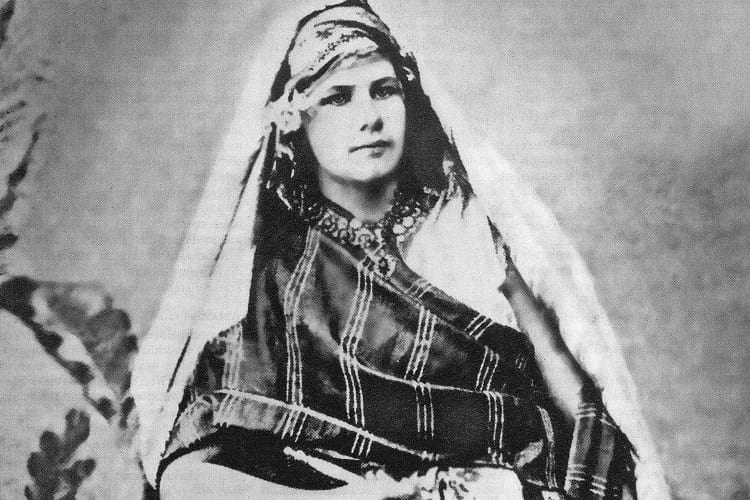
Isabelle Eberhardt. (Adrian Michael / Wikimedia Commons)
Born on 17th February 1877, Isabelle Eberhardt was a Swiss-Russian writer and explorer. The illegitimate daughter of an aristocrat and a Russian anarchist, she left for North Africa to pursue a life of adventure. There, she embraced Islam by joining a mystic sect and became engaged in Algerian politics. She almost survived an assassination attempt, only to finally die in a flash flood. Although she left a number of journals and personal notes behind, the vast majority of her private life remains shrouded in mystery.
Early life: A sheltered yet wholesome childhood

A young Isabelle Eberhardt. (Louis David)
Isabelle Eberhardt was the fifth child of her mother, the widow of a Russian General. She was an illegitimate daughter born out of wedlock between Nathalie Eberhardt de Moerder and the Russian anarchist, Alexander Trophimowsky. Tutor to the Moerder children, he played a paternal role in the lives of young Isabelle and her brother Augustin.
The children were brought up in a villa on the periphery of Geneva, Switzerland. The family lived a reclusive life. Being an anarchist, Alexander Trophimowsky raised the children by imparting them with anarchist values. He taught them myriad languages as well. However, the children were rarely allowed to loiter off the property grounds.
Isabelle Eberhardt was raised more like a boy than a typical girl of the era. From a very young age, she was encouraged to dress in male attire, which complemented her characteristic male persona. Many visitors often mistook Isabelle to be a boy when they saw her dressed up in her usual garb. This trait of Isabelle’s went beyond superficial quirks in her clothing, and she even indulged in stereotypically boyish activities such as chopping wood.
Fascination with faraway lands
From an early age, Isabelle had a great fascination for North Africa. She and her brother had read many Oriental literary works written by Pierre Loti and were eager to visit the Middle East as well. She had even studied the Quran with her father.
Life and travels in the Maghreb
When her mother’s health started deteriorating, she and her mother shifted to Algeria. She travelled under the pseudonym Mahmoud Saadi, an Arabic male student. Her mother soon converted to Islam. Being under a male disguise, gave Eberhardt the privilege to visit places that were otherwise forbidden to women. Going about the town and travelling alone helped her pick up Arabic really fast. Isabelle’s adventures in the Maghreb (north-western Africa) as Mahmoud formed the content of her writing.
After the death of her mother, she joined a protest group against the French colonialists in March 1898. Eberhardt soon became a ferocious voice of dissent against the French colonialism. Ultimately, fearing arrest, she decided to return back to Geneva.
Life back home
Life back home in Geneva was not very pleasant for Isabelle. Soon after her return, her half-brother committed suicide. Following this tragedy, she completely devoted herself to taking care of her terminally ill father. After the death of her father from cancer, she decided to return to Tunisia with very little money left.
The eclectic lifestyle of Isabelle Eberhardt

Isabelle in Arab attire. (Unknown)
Eberhardt was a daring European woman who travelled to Africa disguised as an Arab man, privy to a world and lifestyle inaccessible to most women. Along on her travels, Isabelle brought with her several books, including those of Dostoevsky and Pierre Loti. She read the former’s works over and over again as he was her favourite. At the same time, she declared Pierre Loti to be her role model. She was also greatly influenced by the Russian feminist, Lydia Pachkov. Unable to carry her vast collection of books, Eberhardt tore out her favourite pages to bring along with her to Algeria. She was a polyglot, and by the age of twenty, she could speak Latin, Russian, German, French and Arabic.
Isabelle Eberhardt was raised to be an independent and critical thinker. She defied the typical European conventions and norms to follow her own path. She travelled throughout Morocco and Algeria, living like a nomad. She states that the only way to experience “real freedom” is by being outside one’s comfort zone. She used to frequent coffee houses. Interestingly, she had lost most of her teeth because instead of carrying a toothbrush, she used to carry a gun. The rest of her teeth were black from smoking too much kif. She became extremely thin because of her addiction to narcotics and incessant drinking of alcohol. She barely ate food. All these eccentric habits of hers were met with strong disapproval and also ended up affecting her skills and career as a writer.
Eberhardt: The writer
Isabelle Eberhardt wrote journals for newspapers and articles for magazines. Between 1899-1901, she attempted to launch her career as a writer. She published her first short story, titled Infernalia, in 1895, under the pen name Nicolas Podolinsky. Eberhardt conveyed her resentment towards established gender roles through her fictive protagonists.
Eberhardt’s transvestism
Isabelle Eberhardt was an extremely liberated individual, and actively challenged the established gender roles of her era. With her extremely unique dress style, she displayed the notion that individuals should not be reduced to the binaries of gender. Her provocative choice of fashion compelled others to re-examine and question the set gender dynamics.
Eberhardt’s initiation to spirituality; her married life and final days
Isabelle Eberhardt had many affairs, but she eventually settled down with Slimane Ehnni. He was a Muslim of the Qadriya Sufi order, through whom she herself joined the Order as well. She was drawn into spirituality. Her affiliation with the Qadriya Sufi order was remarkable since she was the first European woman to be allowed into their fold. She was permitted to participate in festivities such as Fantasia. Isabelle was almost assassinated by a member of a rival Islamic order in 1901 when the attacker tried to hit her with a sabre. She was saved at the nick of time by two Qadriya members.
Her relationship with her husband, however, started to deteriorate, and she moved to Ain Sefra. On 21st October 1904, Isabelle Eberhardt died in a flash flood in Ain Sefra. After her body had been recovered, Ain Sefra was searched for her manuscripts. Eberhardt’s self – appointed literary executor, Barrucand published her works posthumously.
Isabelle Eberhardt’s life was one of hardship, poverty and a great adventure. With no place to truly call her own and no confidante, Eberhardt looked to Islam as her only anchor. Without a home base or any worldly ties, she was a nomad on a constant lookout to quench her thirst for adventure. Eberhardt will forever be remembered as a feminist-icon ahead of her time, which crossed borders, both geographic and social, that others could only dream of.
Enjoyed this article? Also, check out “Zaha Hadid: The Prominently Leading Woman Architect Who Ruled the Roost in a Man’s World“.
Fact Analysis:
STSTW Media strives to deliver accurate information through careful research. However, things can go wrong. If you find the above article inaccurate or biased, please let us know at [email protected].
RELATED
The post A Cross-Dressing Explorer, Isabelle Eberhardt Crossed Geographic and Social Boundaries to Follow Her Heart appeared first on .
]]>The post Hetty Green: The Richest American Woman Who Was Known for Her Extreme Miserliness appeared first on .
]]>
Portrait of Hetty Green. (Library of Congress)
At the age of thirteen, Henrietta ‘Hetty’ Howland Robinson was acting as an accountant for her family’s business interests. This was fueled by her Grandfather Gideon Howland becoming blind and having her read the financial newspapers to him, however this was no ordinary family to begin with. It was one who made a great deal of money – modern day millions – primarily in the shipping and whaling industries. They were a well-known Quaker family – a Christian Sect, who were based in Massachusetts, one of the thirteen founding colonies on the North-West US coast.
She was born in 1834, a common time for girls to marry into wealthy families but Hetty was opposed to this tradition as she had a thirst for entrepreneurship, even selling many of the clothes her father had purchased for her to help in finding a suitor.
A head start
Giving her grandfather updates on the financial world is a helpful hand many youngsters would receive but few would have the opportunities Hetty had in terms of education – especially for that time. For instance, she enrolled in a prestigious boarding school called Eliza Wing. This was funded by her family, and her father – who became president of the family whaling company – took her to meet many stockbrokers with him to further her tutoring. Outside of this, her extra-curricular activities involved business-based developments, mainly learning from her father’s everyday life. She would move to New York after attending finishing schools in Massachusetts, seeking a more independent life.
During this time in the city called the Big Apple Hetty would inherit fortunes from her family members including a $8,000 house from her mother and $20,000 from her aunt. (This combined would be almost $800,000 in today’s money). Her father’s death would leave her the equivalent of almost $100,000,000 ($5 million for their time).
Furthermore, she would add to her fortune in winning legal battles from other family wills. She finally found a suitor (on her own time) when she was married to Edward Henry Green, another millionaire, taking his name and having two children called Edward and Sylvia. Albeit she forced him to denounce all rights to her money and inheritance. Edward was happy with this and they would move to London together. Legal trouble with Hetty’s cousins contributed to them leaving America also with several arguments emerging concerning the court battles.
Simple strategies and wearing the ‘pants’ in the relationship
Hetty had a self-confessed simple strategy of buying when prices are low and the items not sought after, storing them, and then selling them when the prices rose.
“I buy when things are low and nobody wants them… I keep them until they go up and people are crazy to get them. That is, I believe, the secret of all successful business.”
This meant she would keep unwanted items in her warehouses until they were wanted again. A seemingly easy algorithm but one which requires a great deal of storage space, which not everyone has. She made $1.25 million profit in her first fiscal year in London mainly on railroad stocks and mortgage bonds.
The Greens moved back to the US after being successful in London but after financial trouble, Hetty bailed out her husband who was $700,000 in debt. She amassed so much money that she became known as the Queen of Wall Street – the famous financial district of New York.

Hetty Green’s residence in Vermont, United States. (Library of Congress)
Miserliness
It is common to hear stories of multi-millionaires who cut corners and are very frugal, leading very simple lives but Hetty Green went far beyond this, if reports are to be believed. Rumours go that she never used hot water or gas heaters. She would eat extremely cheap food, only wear clothes until they were completely worn out and rarely washed to save on soap. She would travel thousands of miles to chase up small debts. Her view would be however that,
“Just because I dress plainly…. They say I am… insane.”
For these reasons, her moniker was changed from the Queen to the Witch of Wall Street. Maybe this affront can be attributed to a male-dominated society at the time alas, in an attempt to scupper competition. As well as the typical media sensationalism.
Possibly these techniques of hers were not just down to money saving. She mentioned that it was boring going out in high society and staying in a fancy, big house all day. That she liked to mingle with other peoples.
“I should get very tired of living in one of the great houses in New York… They don’t have any real pleasure… It’s intercourse with people that I like.”
This can be believed because it was found out that she gave much to charity over the years, all the while in secret. Green was reported to have even bailed out the city of New York on occasions such as the Panic of 1907 where riots occurred because of a crash in the stock exchange.
All of this seems relatively harmless except for the next rumour. Green was spotted in a free clinic when her son suffered a broken leg. Newspapers reported that she was so frugal as to not treat her son’s broken leg privately. His leg did not heal and was amputated later in life. Another reason for this miserliness could be from her religious affiliation.
“I am a Quaker, and I am trying to live up to the tenets of that faith.”
Hetty Green’s legacy
Her son, Edward, spent his life managing several of his mother’s properties in Texas and Chicago then spent time with his mother in her final months. The daughter, Sylvia, took a more traditional route of finding a suitor but her mother deemed them unacceptable thinking they were all gold-diggers. She would accept a man named Wilks who had a small fortune but only after he agreed to sign out of the inheritance as Hetty’s own husband once did. During her later years, Hetty spent time in basic apartments in New York, self-treating a hernia problem before passing away at 81 in her son’s home. The cause of death was apoplexy resulting from a stroke. It was said she suffered several of these in the run up to her death.
Buried in Beaver Falls, Vermont, next to her husband, Hetty Green’s final fortune was between 2.3 and 4.6 billion in today’s worth. It was split between her two children. They were nowhere near as miserly as their mother though as they were more extravagant whilst still being successful, even getting through the Great Depression unscathed financially. On their deaths, Sylvia donated most of her wealth to charities and hospitals. Edward – a collector and innovator – had his estate donated to MIT (the Massachusetts Institute of Technology). Both were buried in Beaver Falls with their parents.
Writer’s opinion
We study many characters on STSTW Media who fall between the fine line of genius and madness. It seems Hetty Green was of the same ilk. An eccentric persona but one with undeniable talent, fortitude and ruthlessness. Different from the classic entrepreneurs of the time who were mainly industrialists, Green moved more in real estate and loaning. More than an entrepreneur she was a feminist who provided a massive leap for females in the business world.
“It is the duty of every woman, I believe, to learn to take care of her own business affairs.” She would remark, “A girl should be brought up as to be able to make her own living…”
Now, in many parts of the world – included where Hetty lived – it is commonplace.
A final note is from Hetty Green’s favourite poem. It is called My Symphony by William Henry Channing and gifts further belief that she wanted to experience segments of a working class life. Perhaps this will illustrate her character more than anything,
To live content with small means; to seek elegance rather than luxury, and refinement rather than fashion; to be worthy, not respectable, and wealthy, not rich; to listen to stars and birds, babes and sages, with open heart; to study hard; to think quietly, act frankly, talk gently, await occasions, hurry never; in a word, to let the spiritual, unbidden and unconscious, grow up through the common — this is my symphony.
Fact Analysis:
STSTW Media strives to deliver accurate information through careful research. However, things can go wrong. If you find the above article inaccurate or biased, please let us know at [email protected].
RELATED
The post Hetty Green: The Richest American Woman Who Was Known for Her Extreme Miserliness appeared first on .
]]>The post Hanns Scharff: The Extraordinary Interrogation Technique of a Nazi Interrogator appeared first on .
]]>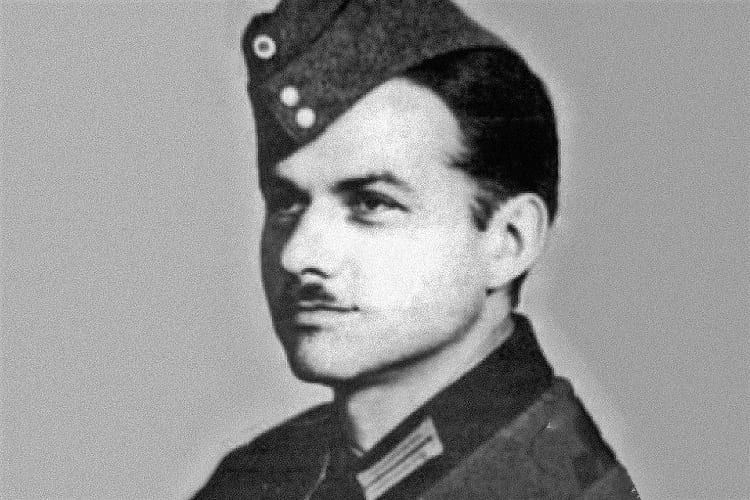
Hanns Scharff. (German Federal Archive)
When thinking of master interrogators, cruel individuals come to mind. Individuals who are able to inflict a great deal of physical or emotional pain on another without feeling empathy. A completely inhuman occupation but in the realms of society, it has always been an essential commodity, especially during times of war.
The same thought applies when thinking about the NAZIs, an idea of evil individuals. While this is untrue for the majority who were simply following a regime, others – many of those at the head of the party – took pride in their policies and practices. So when the two are combined – a NAZI interrogator – the phrase has a very dark connotation.
This particular interrogator worked his way up the ranks and by World War II oversaw prisoner camps known as Dulag Lufts. When enemies of the state were captured they were brought to the attention of the specialist known as Hanns Scharff. Fluent in English he quoted himself as “…the spider sitting on its web…”
From salesperson to interrogator
Scharff was born in 1907, in the East Prussian Empire. He grew up in the town of Leipzig where he studied art and learned the family’s textile business. On reaching adulthood he was sent to South Africa which made him fluent in English. He excelled in the sales division of a company, handling clients who considered him to be a gentleman to do business with.
Hanns married an English lady called Margaret Stokes who happened to be the daughter of a legendary RAF (Royal Air Force) Captain named Claud Stokes. This information would be a coincidence to some extent later in the story. The newly-wed Hanns and Margaret went on holiday to Germany one summer but it would turn into a longer stay than first hoped.
World War II broke out and still a German citizen, Scharff was sent to the Wehrmacht division for military training, destined for the Russian front. He was persistent to stay in Germany however and used his fluency in English to be promoted, becoming a Lance Corporal. The German ended up in Oberursel near Frankfurt, at an Intelligence and Evaluation Center operated by the notorious Luftwaffe Air Force. Their facility was where captured Allied pilots (excluding Soviets) were interrogated. Scharff became an Interrogation Officer.
The new officer was quick to enforce his own methods as he was far from impressed by current techniques. In the Dulag Luft, the captives would mostly come from downed British airplanes whose pilots would have been terrified about being captured by the Nazi regime. Rumours already circulated about the secret police called the Gestapo who were said to administer horrifying torture techniques.
Despite the guidelines of the Geneva Convention, illegal torture persisted. When some US Army pilots were captured, Scharff got his first opportunity. The work started before the meeting as he obtained every piece of information possible about them. He declined to wear a uniform; casual clothes were all he needed to extrapolate information.
I was like the spider sitting on its web, with all the elements I could use at hand, except the brutality.” -Hanns Scharff
Scharff’s interrogating technique
The prisoners would not find a spider but a gentleman. And this is why Hanns Scharff is so special. He was both a Nazi and an interrogator but chose not to do what was expected of him. The history of interrogation has always involved torture but he was brave enough to condemn it. No doubt at first the prisoners and his colleagues alike would have presumed it to be a trick but Scharff was highly successful in using psychology, and never force.
The fact he spoke perfect English meant he gained their trust. He created the illusion that he knew more than he knew, making the pilots feel that any details they gave were already common knowledge. Some even volunteered it due to being treated so well: They were taken on excursions to forests and the zoo with Scharff as their guide. They received medical care and a generous supply of food. Their good experience and treatment is reflected in the camp’s guestbook where the prisoners described the hospitality of the place.
The only devious aspect – a great weapon for the interrogator – was letting the prisoners know that he would give them to the infamous Gestapo if they did not cooperate or try to escape. But in honesty, he never did. Because for the one prisoner who said nothing – famous pilot ‘Gabby’ Gabreski – Hanns did not punish him. Even though Gabby never helped him they stayed friends and met again after the war was over.
Hanns knew that while these captives were his enemy by name, they were humans who did not start the war. He would be remembered and revered for never inflicting pain on another soul despite being expected to.
Influence on FBI and becoming a US citizen
Long after World War II finished, Scharff eventually settled in various countries – but never his – enemy, the US. The Pentagon was aware and persuaded him to work for them. Newspapers and magazines began to publish his methods. He reported for the US air force and would be an influence for many including former FBI agent Ali Soufan who was involved in investigating 9/11 and at Guantanamo Bay.
In retirement, Hanns would become a US citizen and followed his first love – art; designing mosaics at famous monuments such as Cinderella’s Castle at Disneyland. Hanns is an amazing example of standing up for what is right which is extremely heroic considering what took place in Nazi Germany.
He believed that people are people no matter where they are from and he treated the allies with the same respect he did the axis. Even when wars are taking place there are still shining lights like Hanns Scharff who are not just intelligent but brave enough to put it into practice.
Enjoyed this article? Also, check out “Sir Adrian Carton de Wiart: The One-Eyed Invincible Soldier“.
Recommended Read:
The Interrogator: The Story of Hanns Joachim Scharff, Master Interrogator of the Luftwaffe | By Raymond F. Toliver
Fact Analysis:
STSTW Media strives to deliver accurate information through careful research. However, things can go wrong. If you find the above article inaccurate or biased, please let us know at [email protected].
RELATED
The post Hanns Scharff: The Extraordinary Interrogation Technique of a Nazi Interrogator appeared first on .
]]>